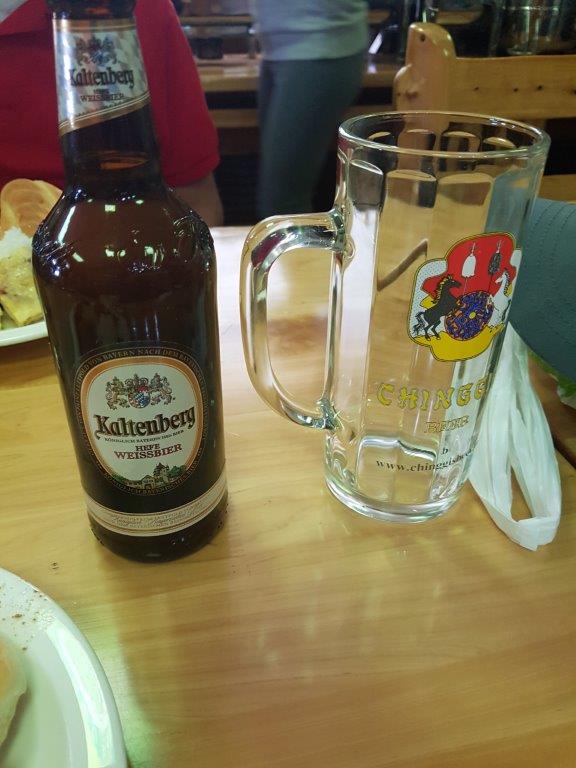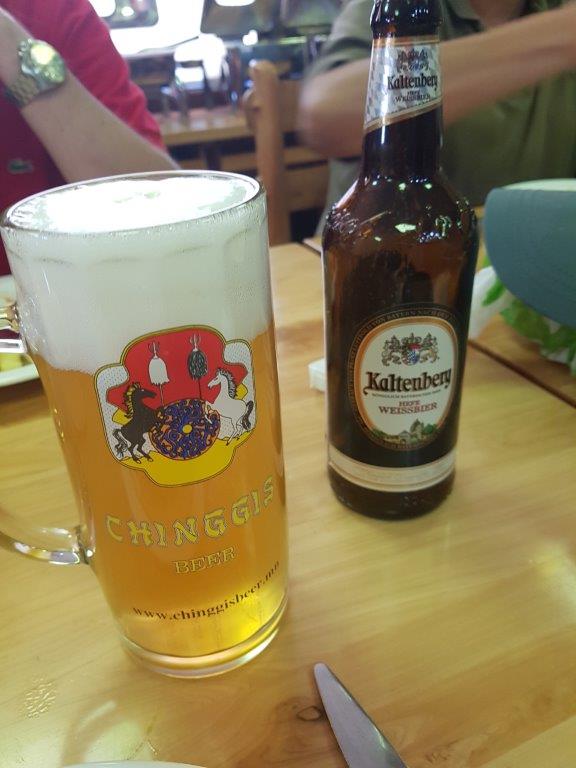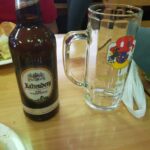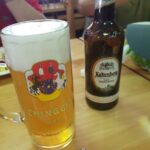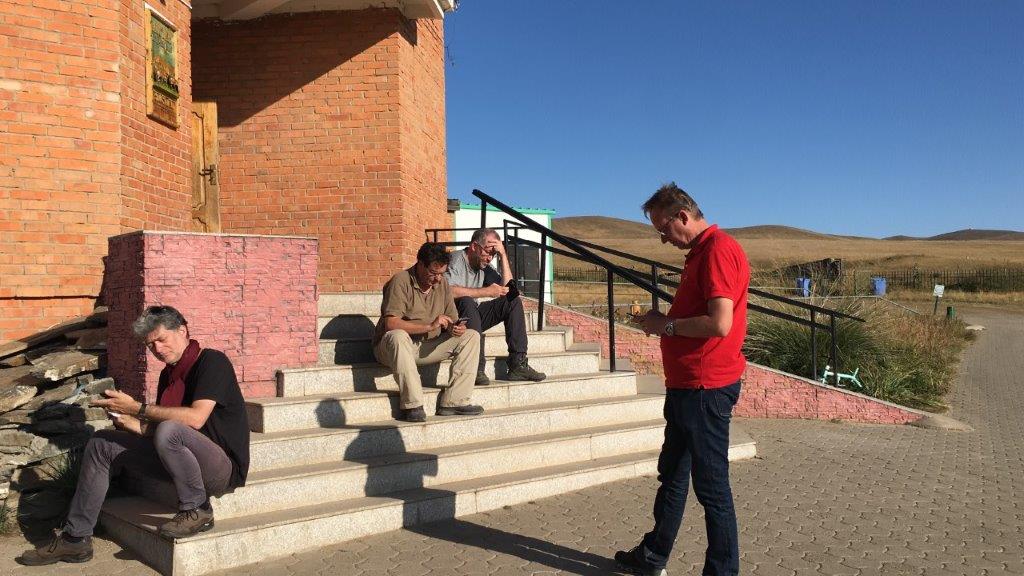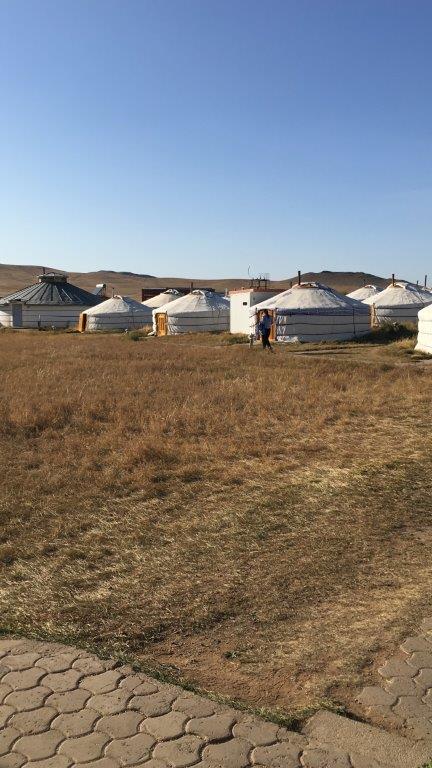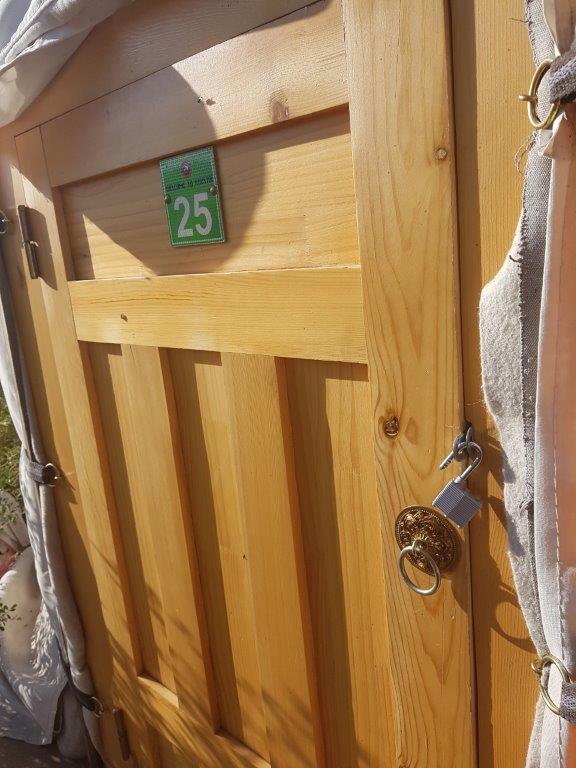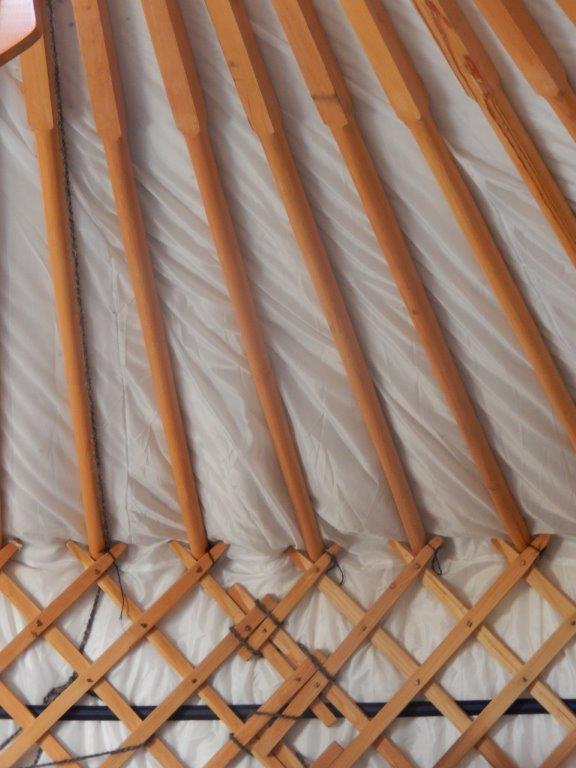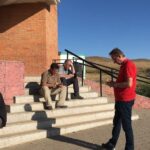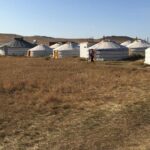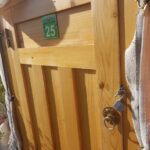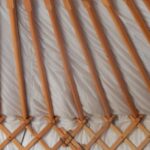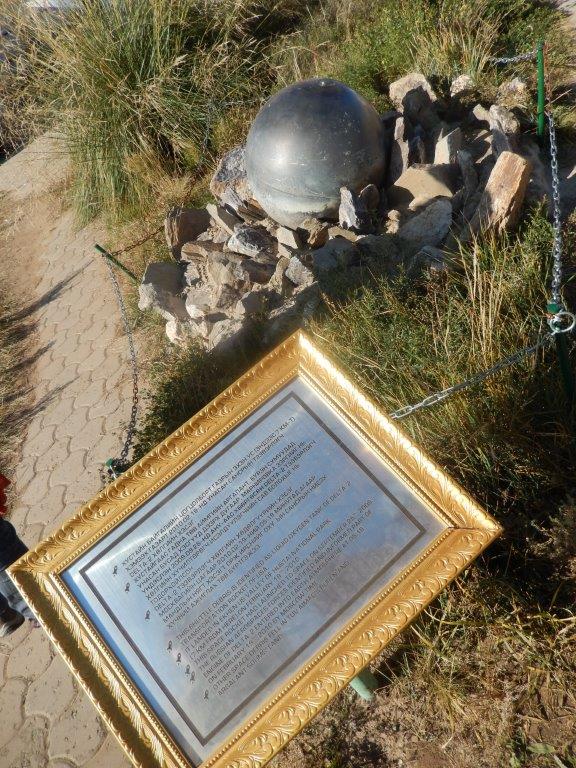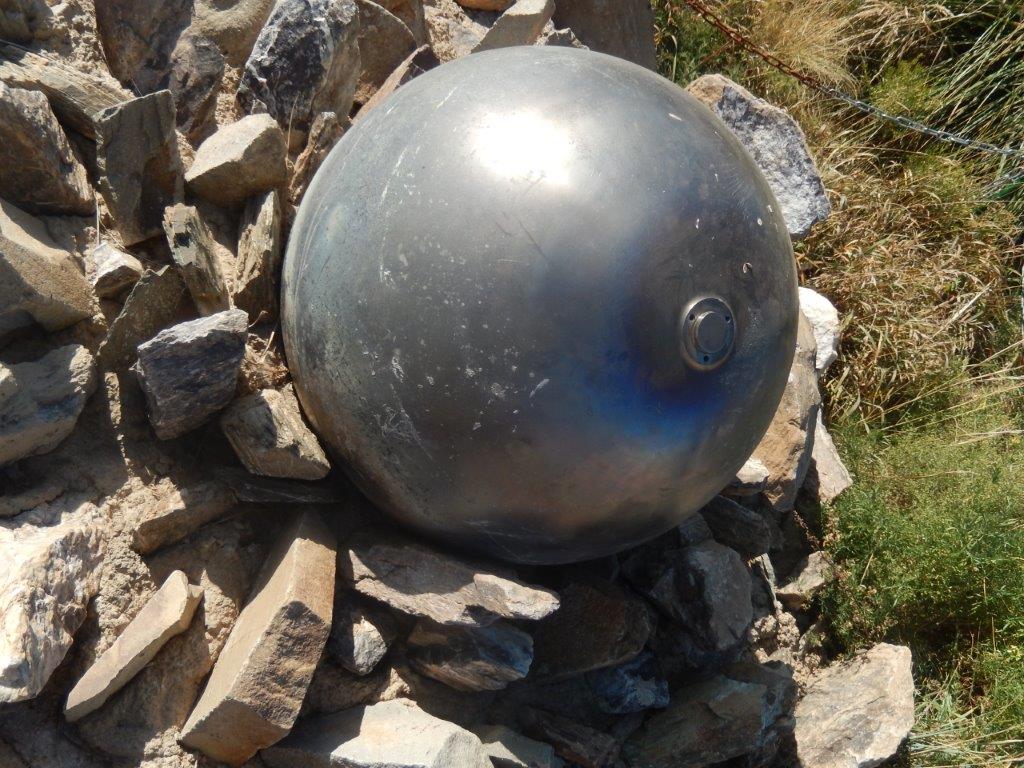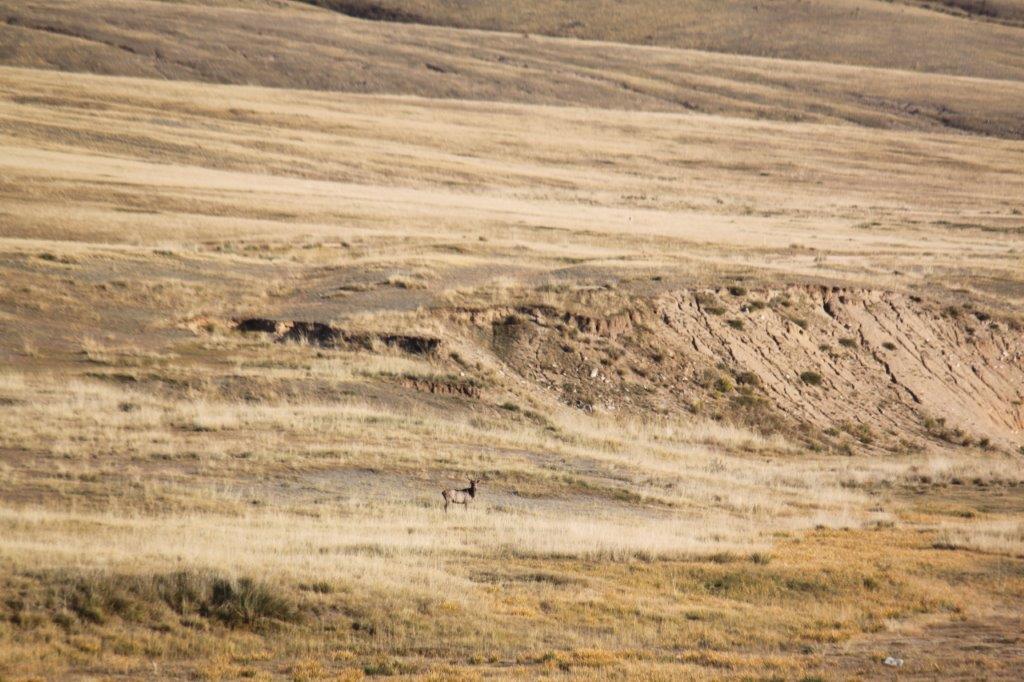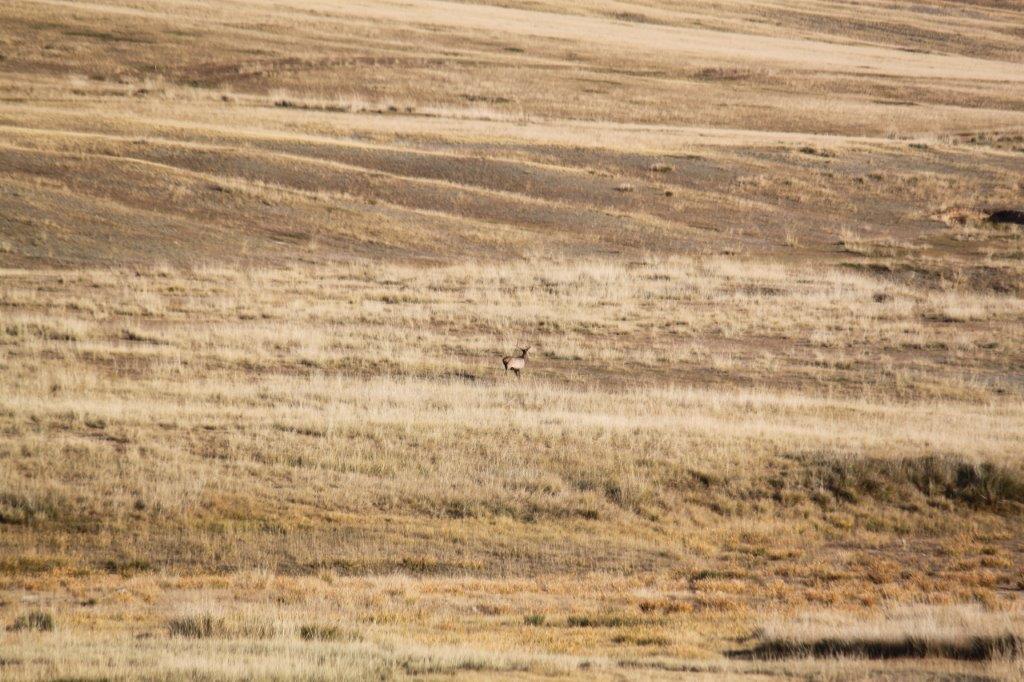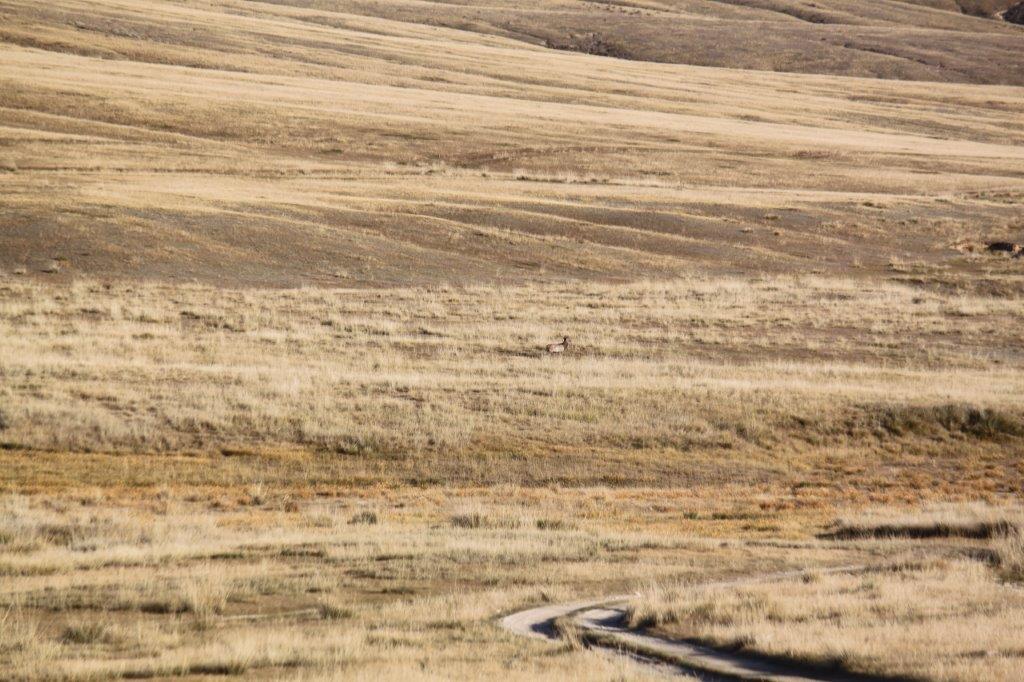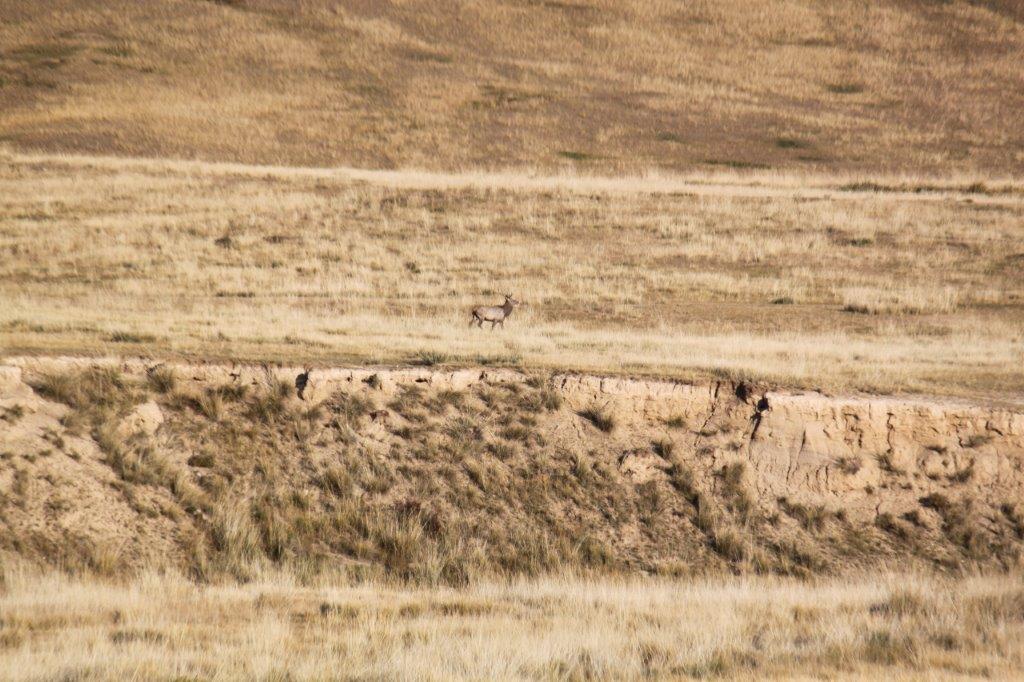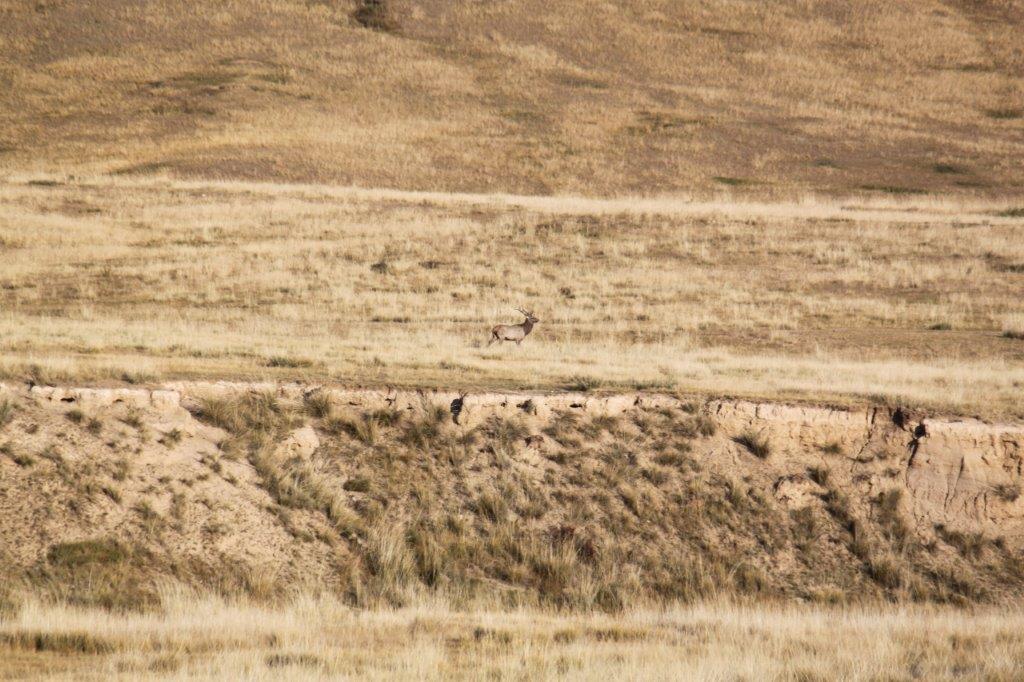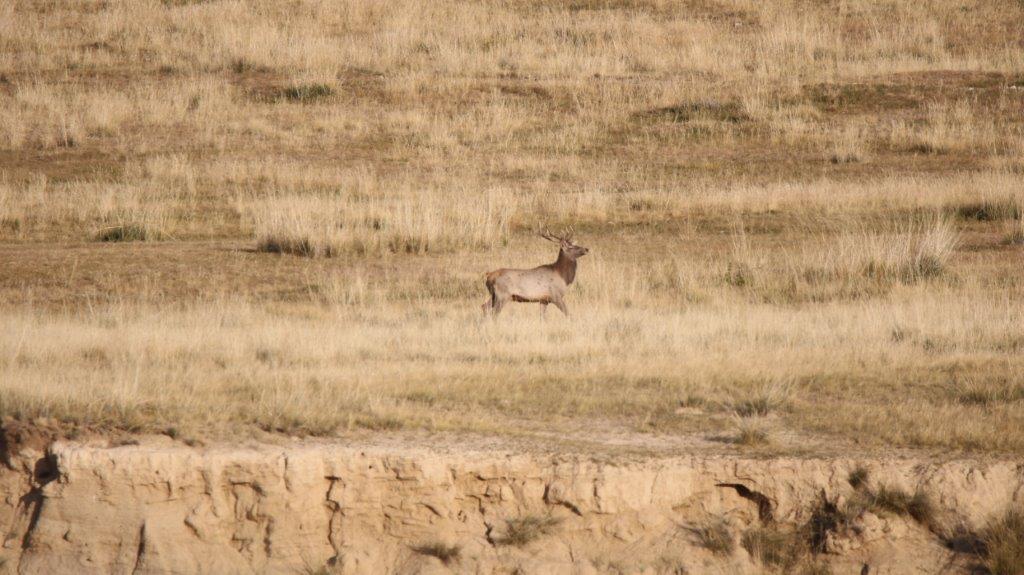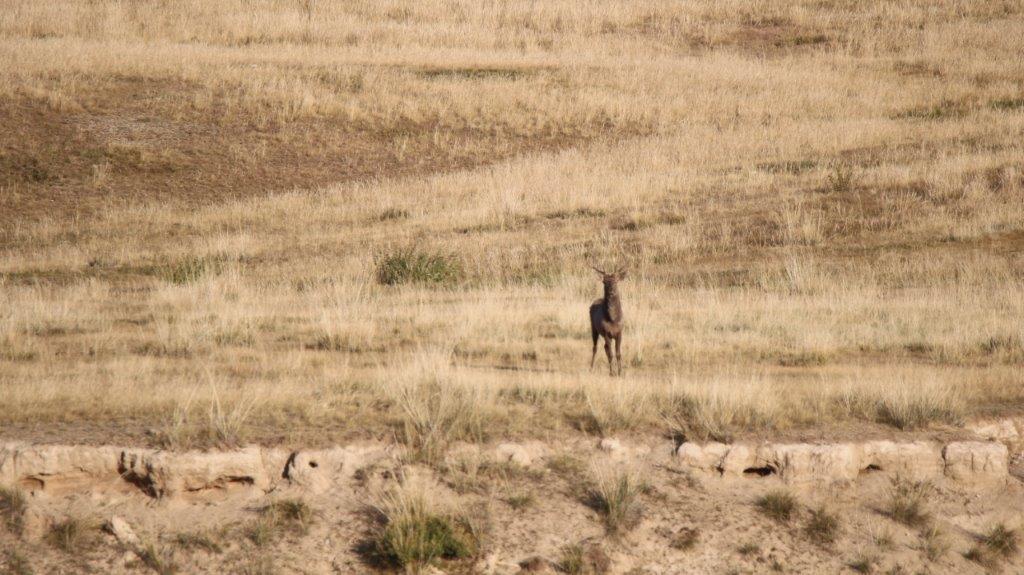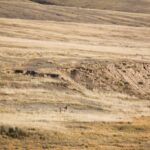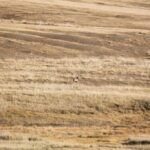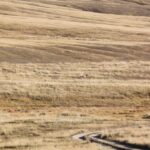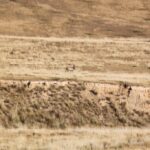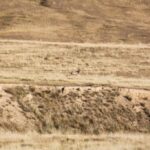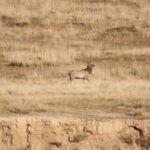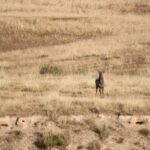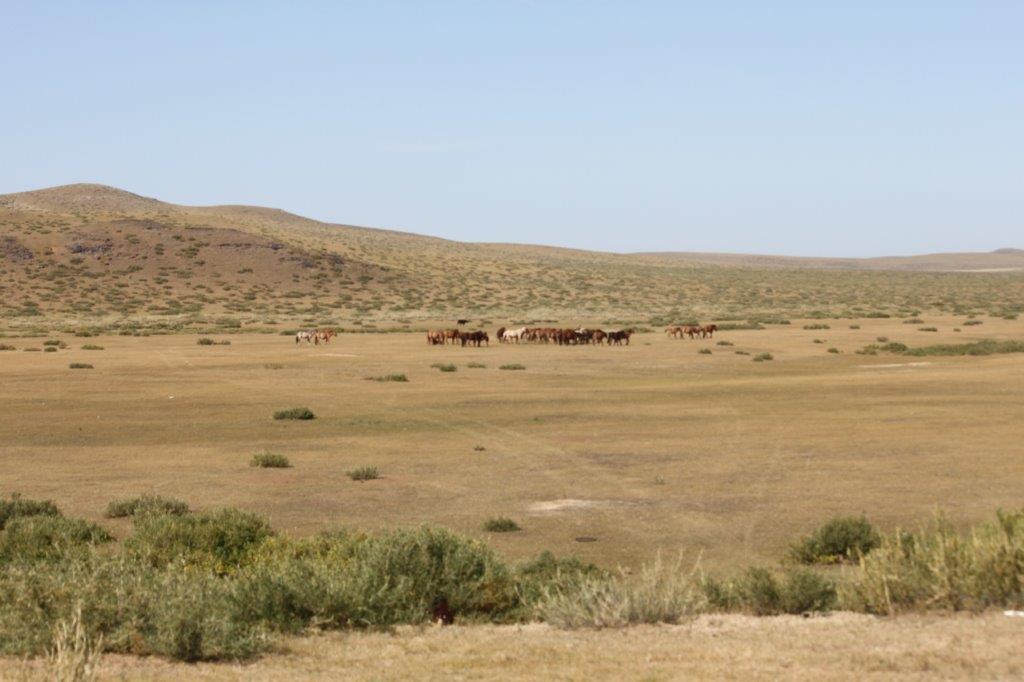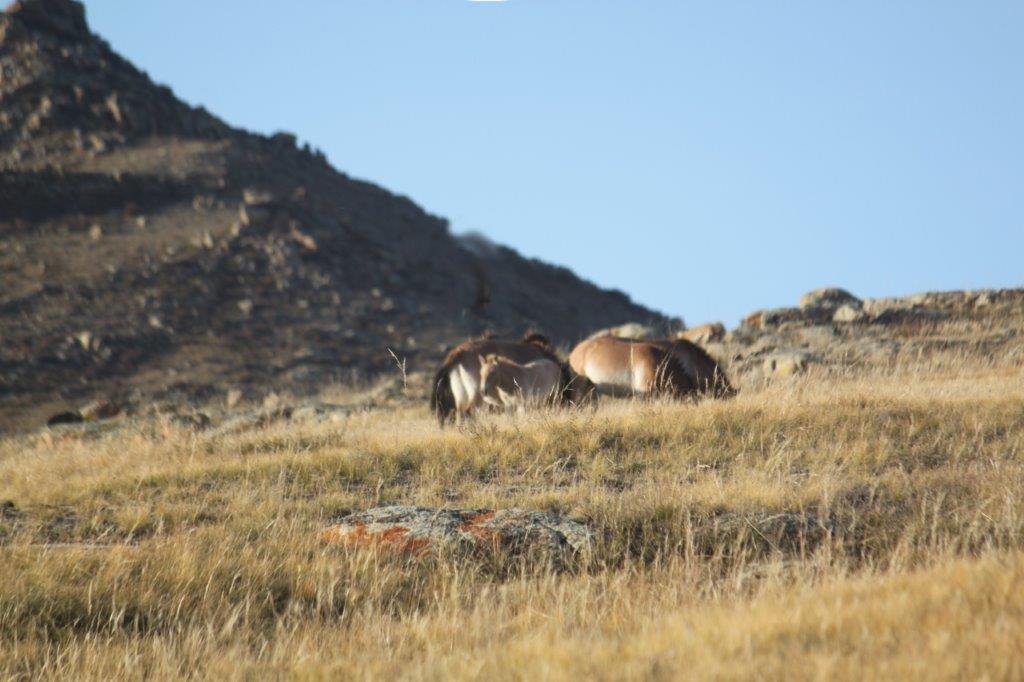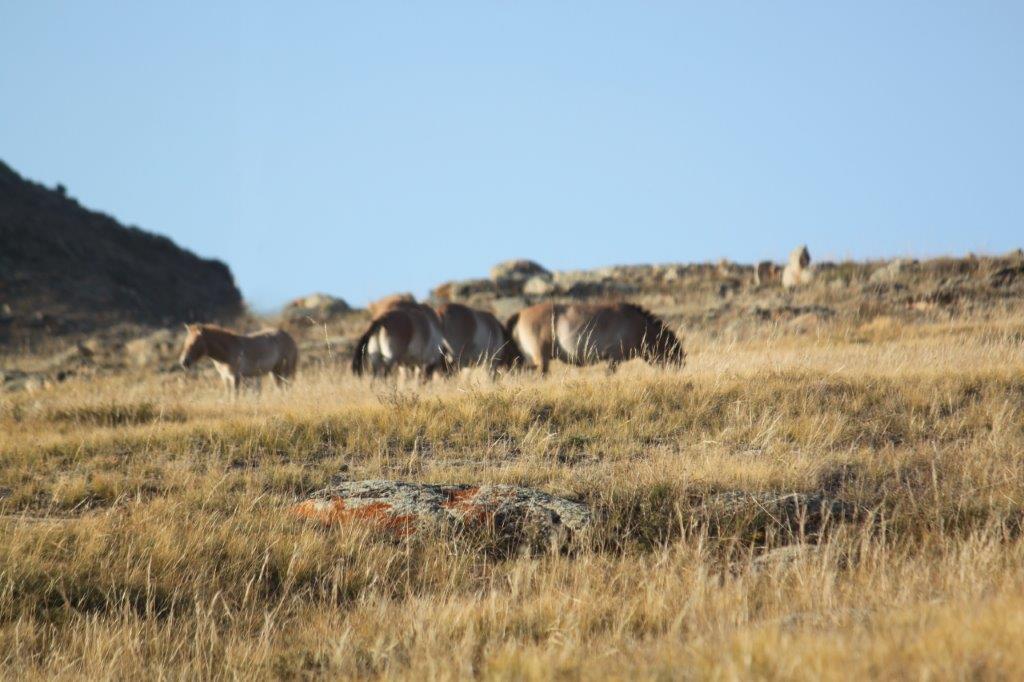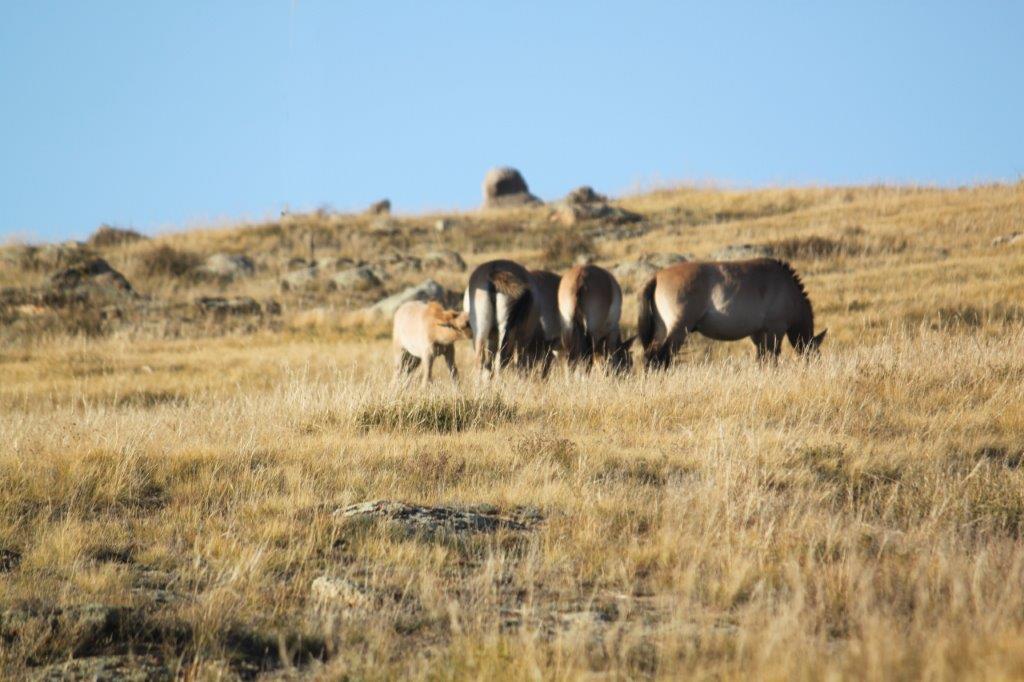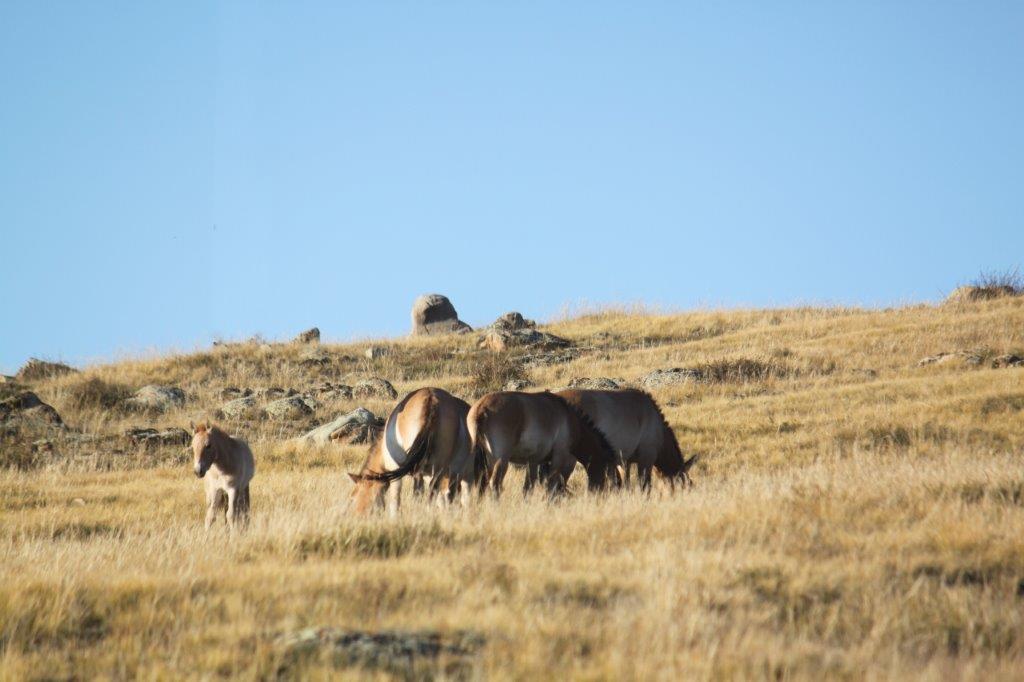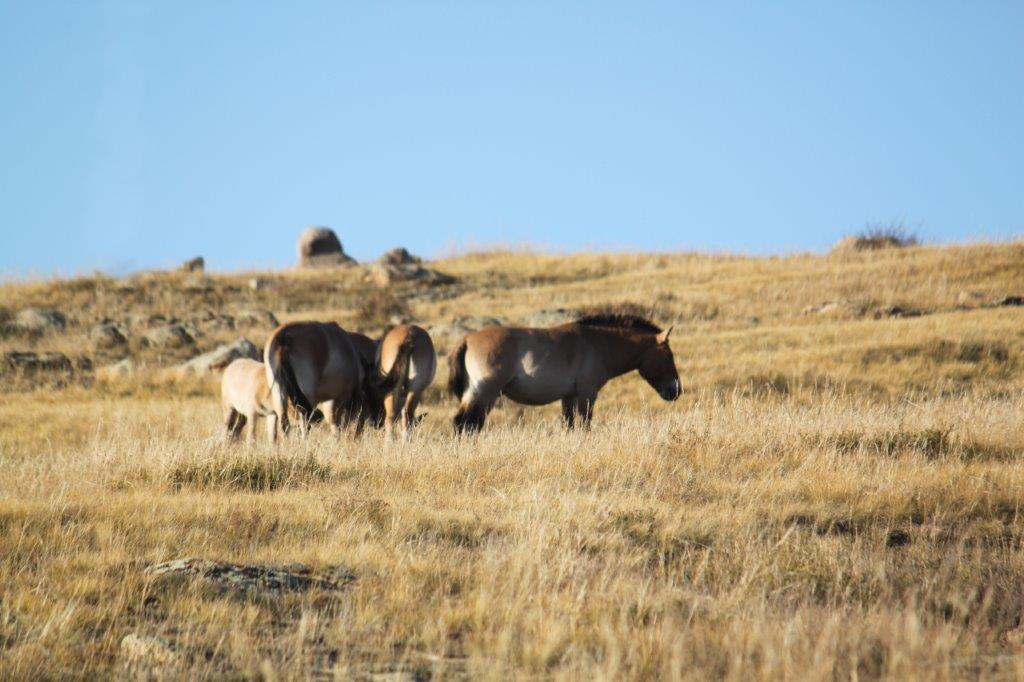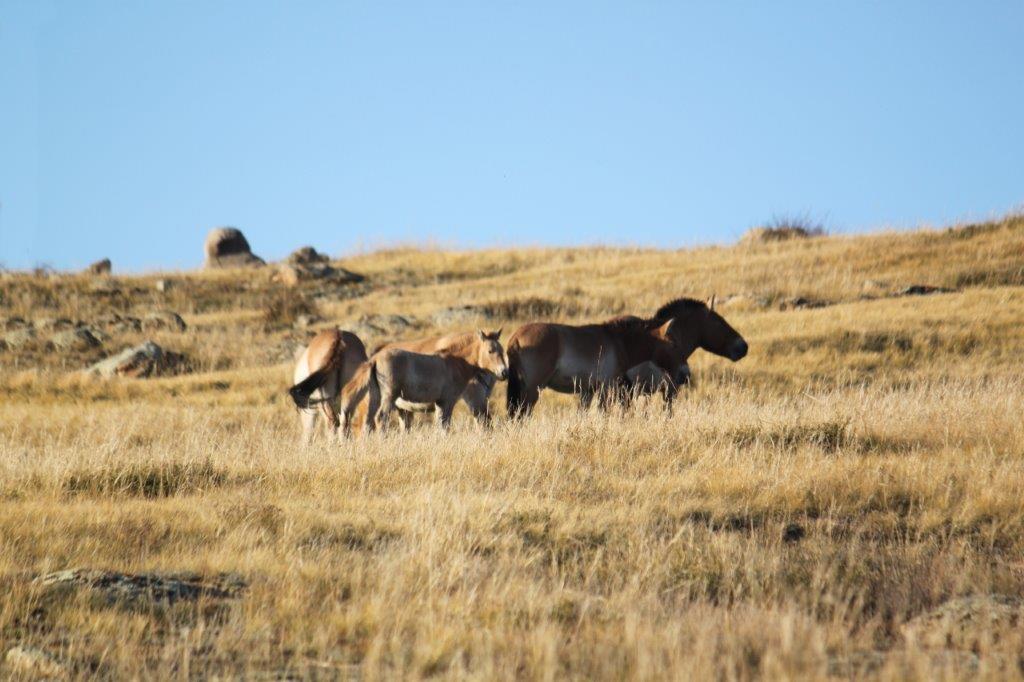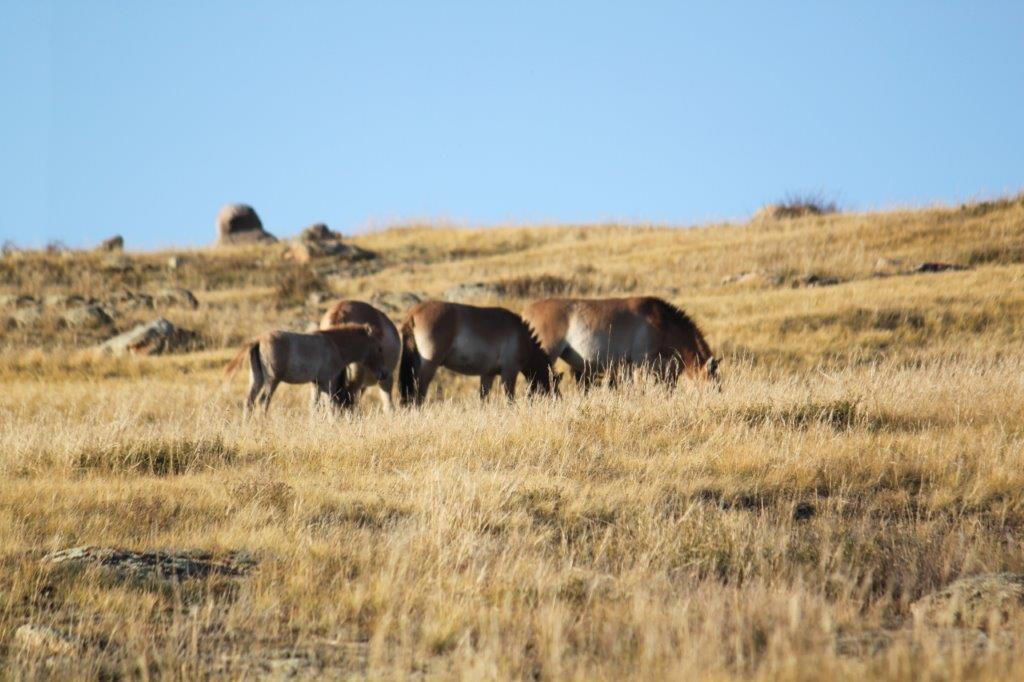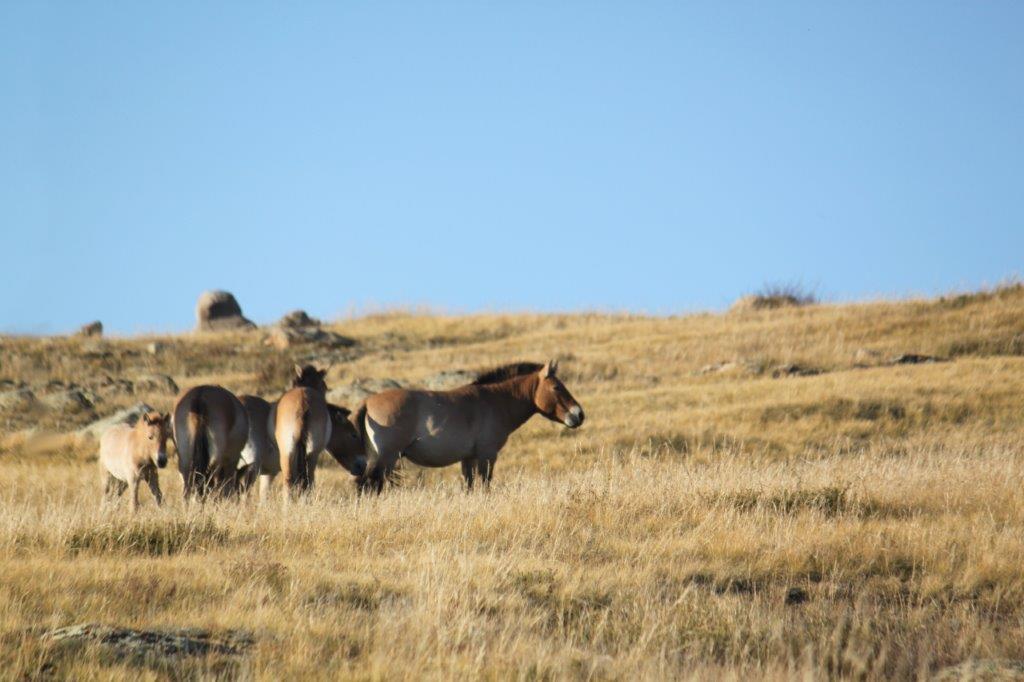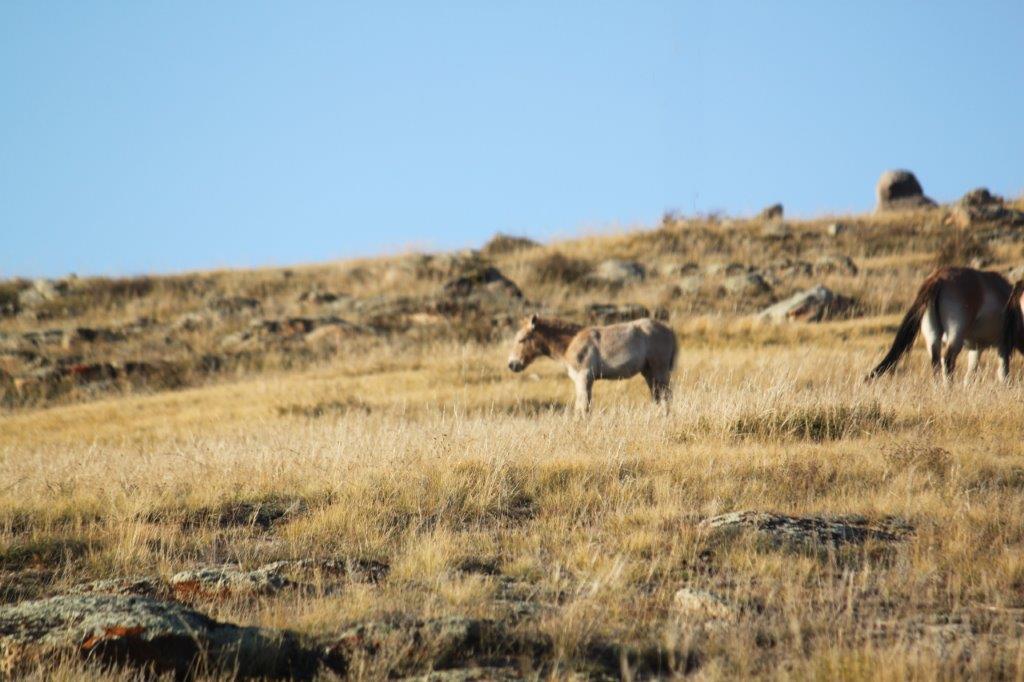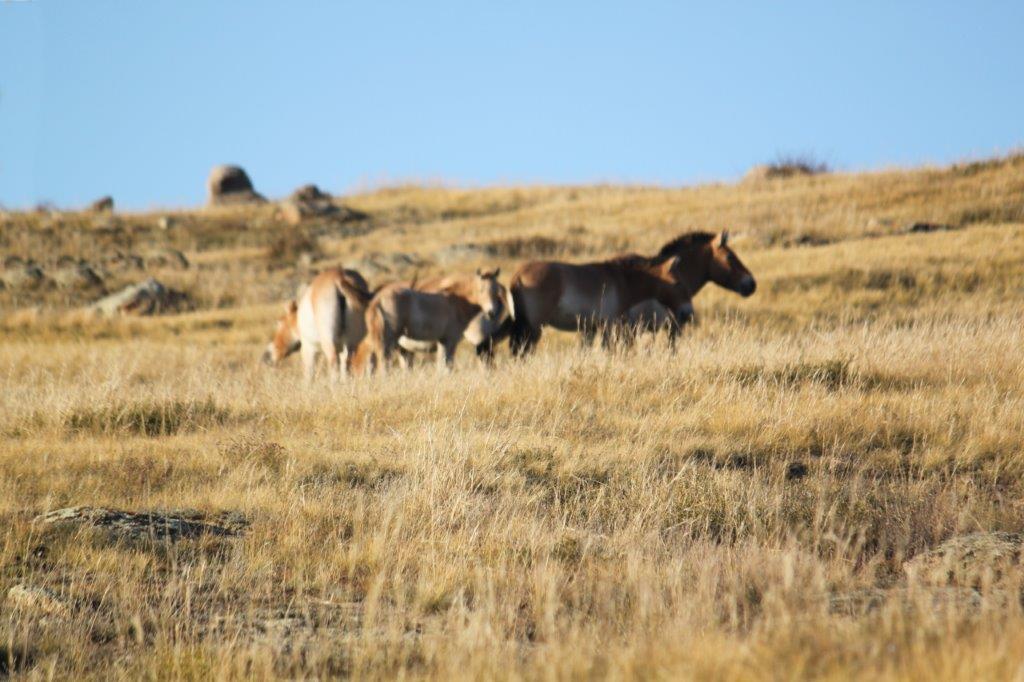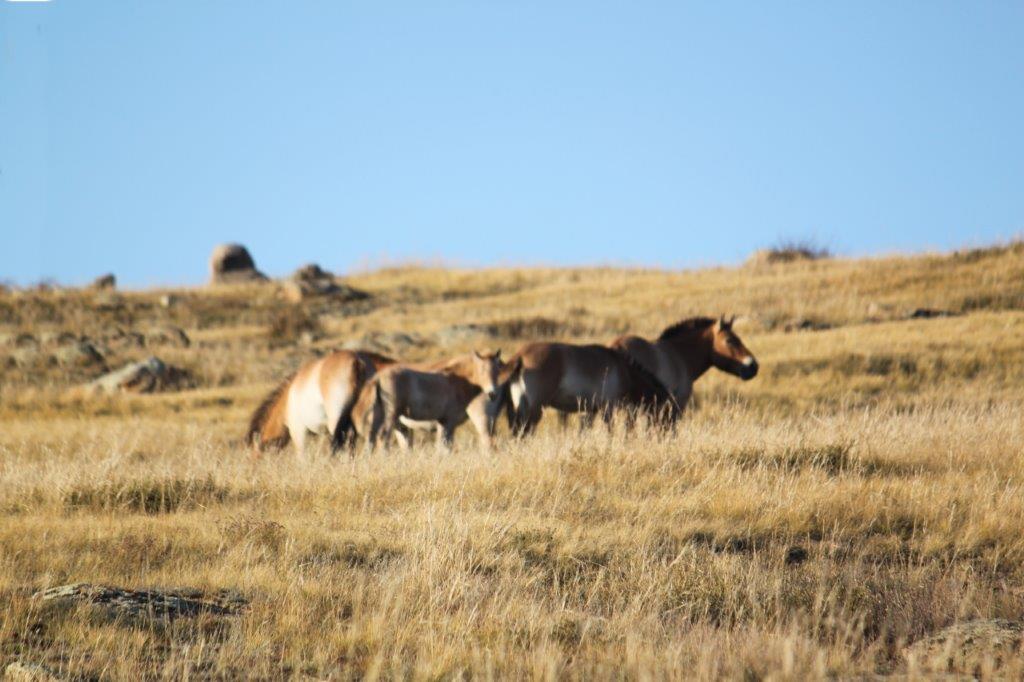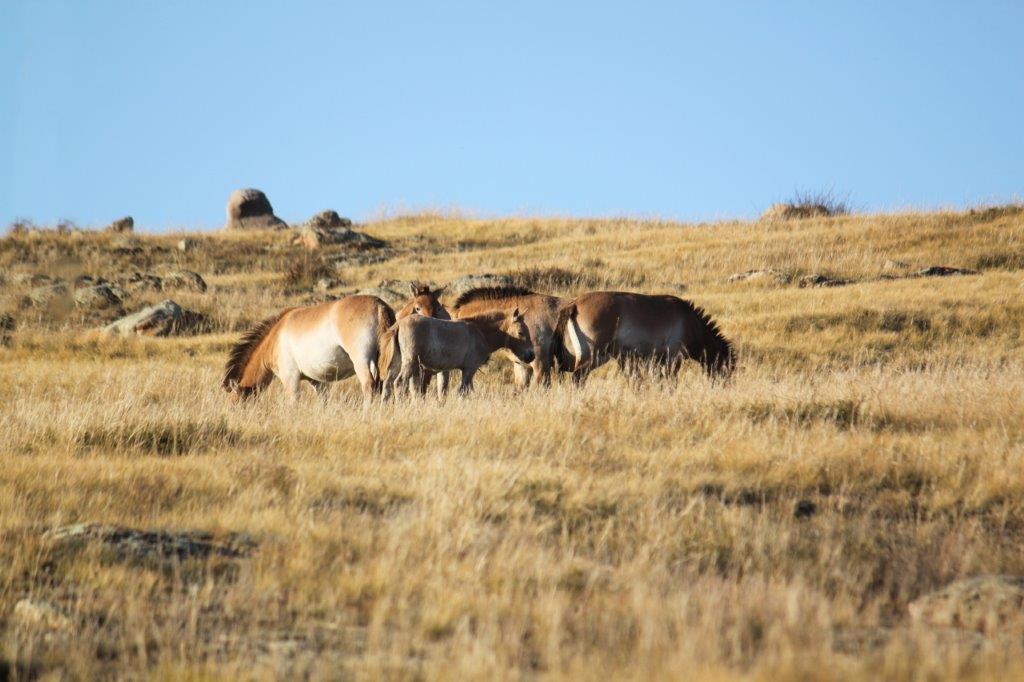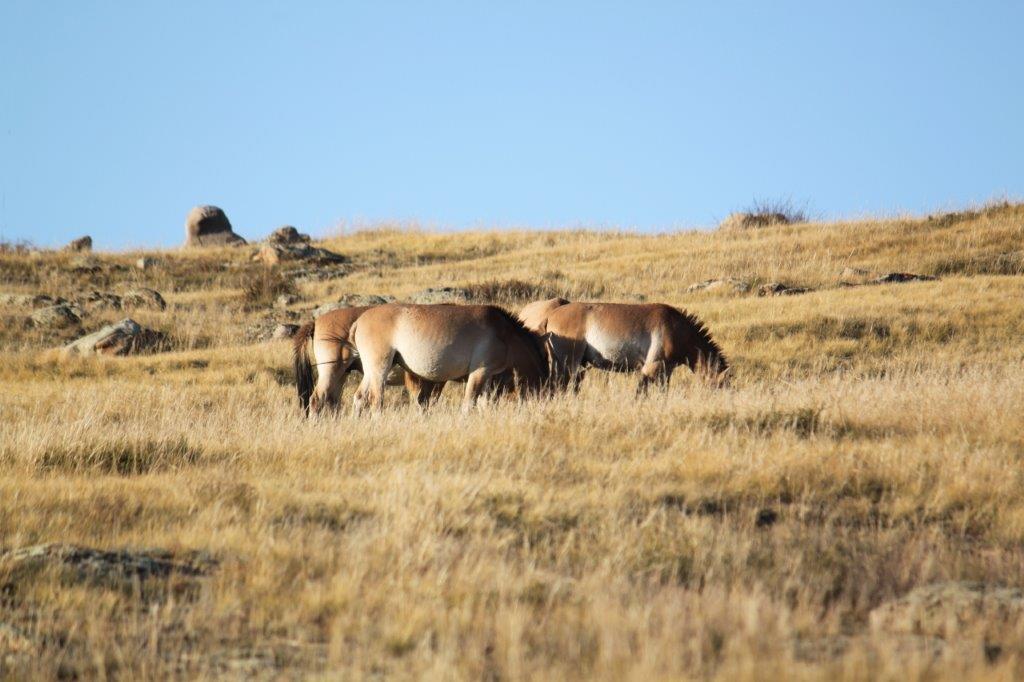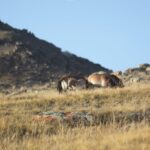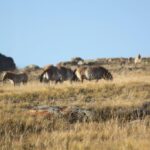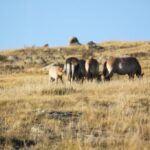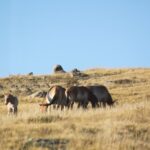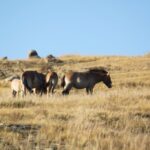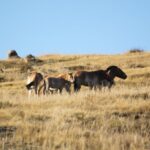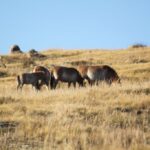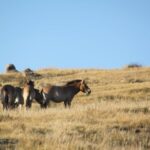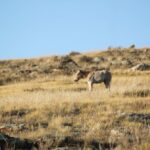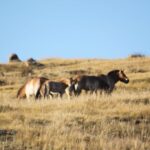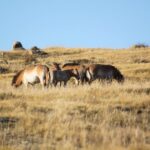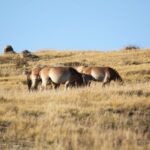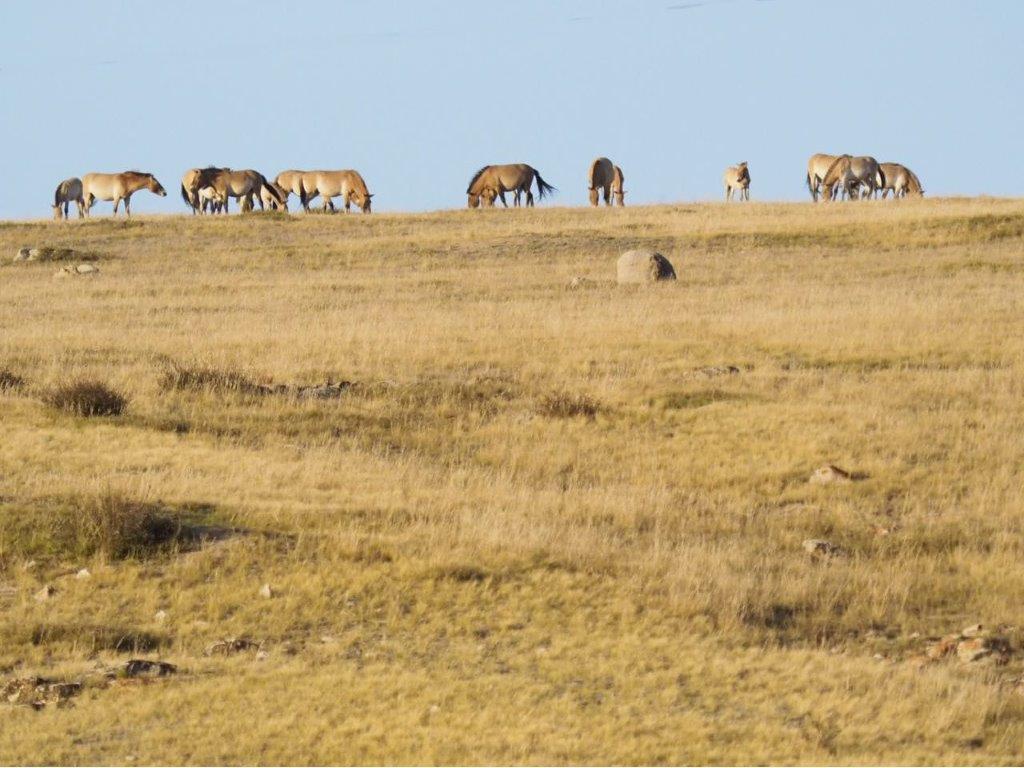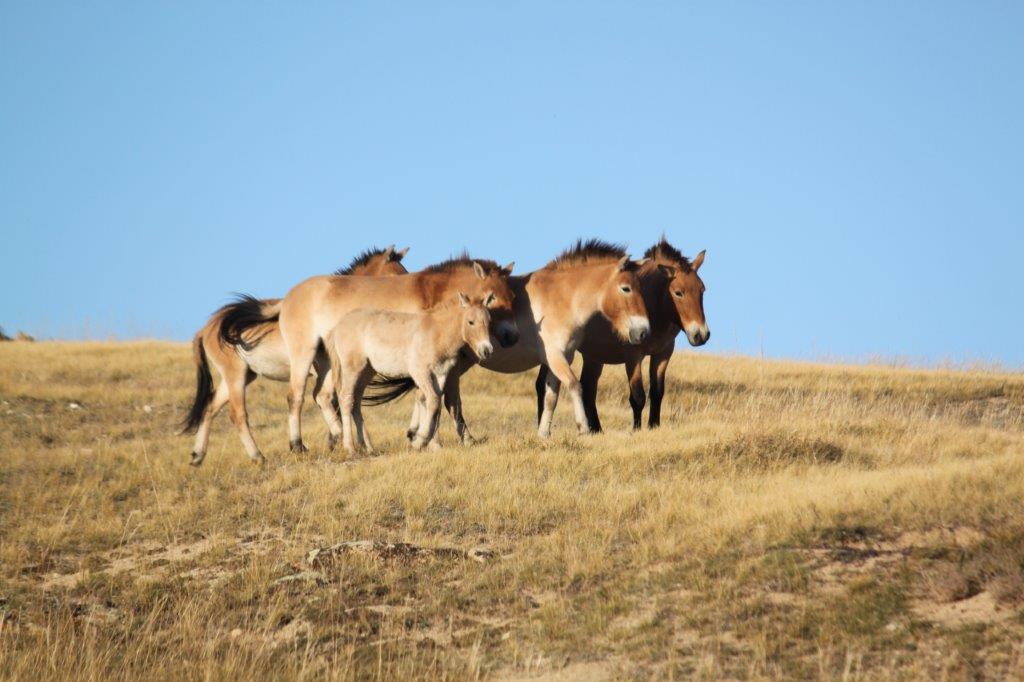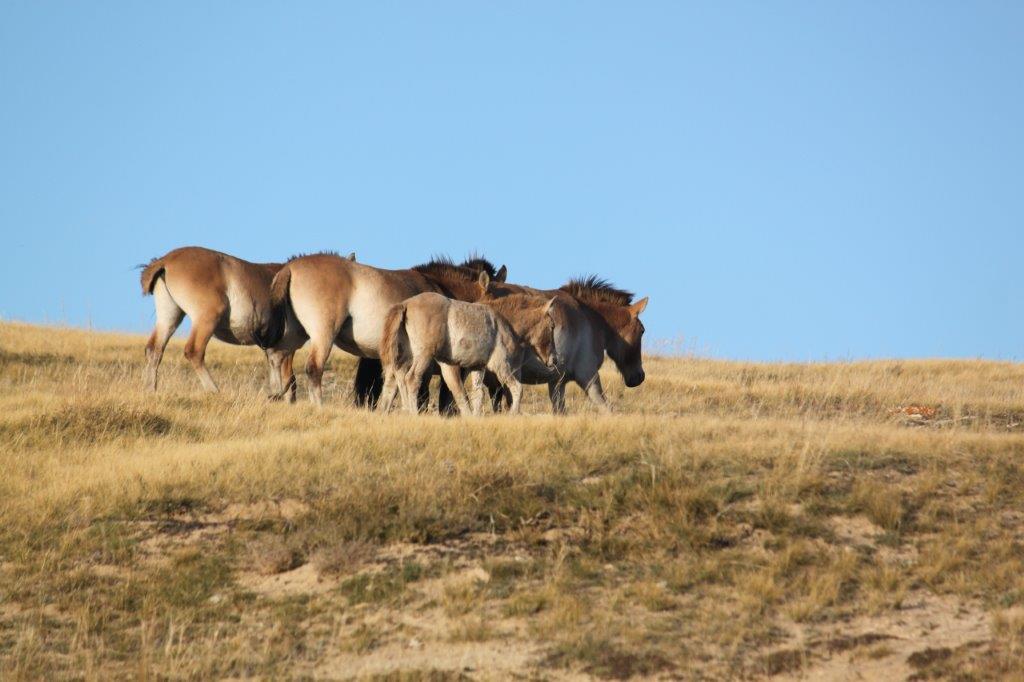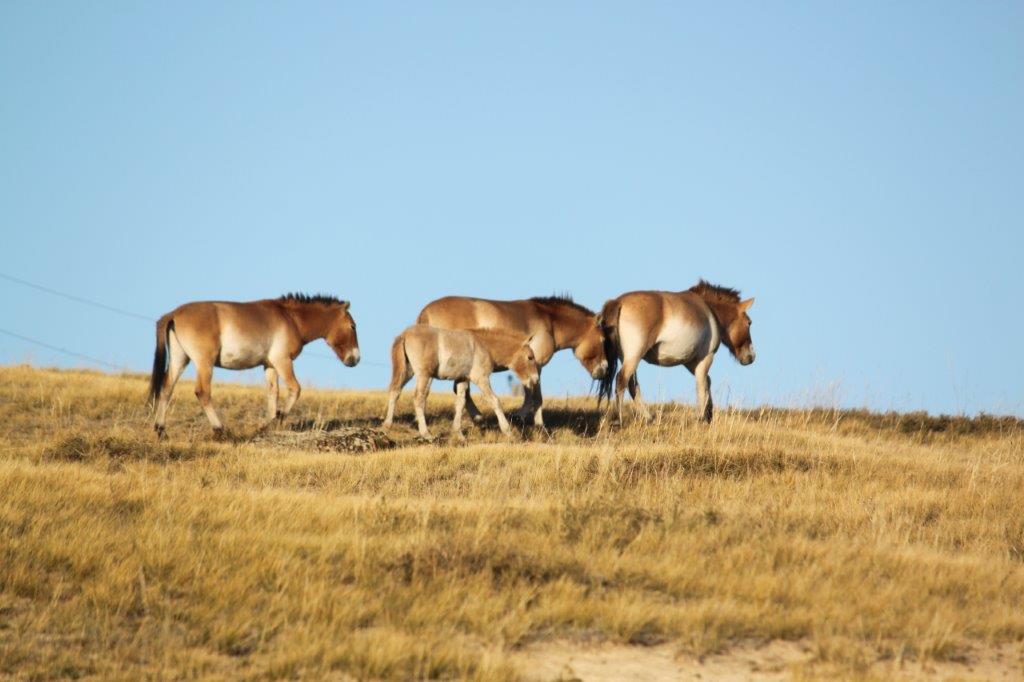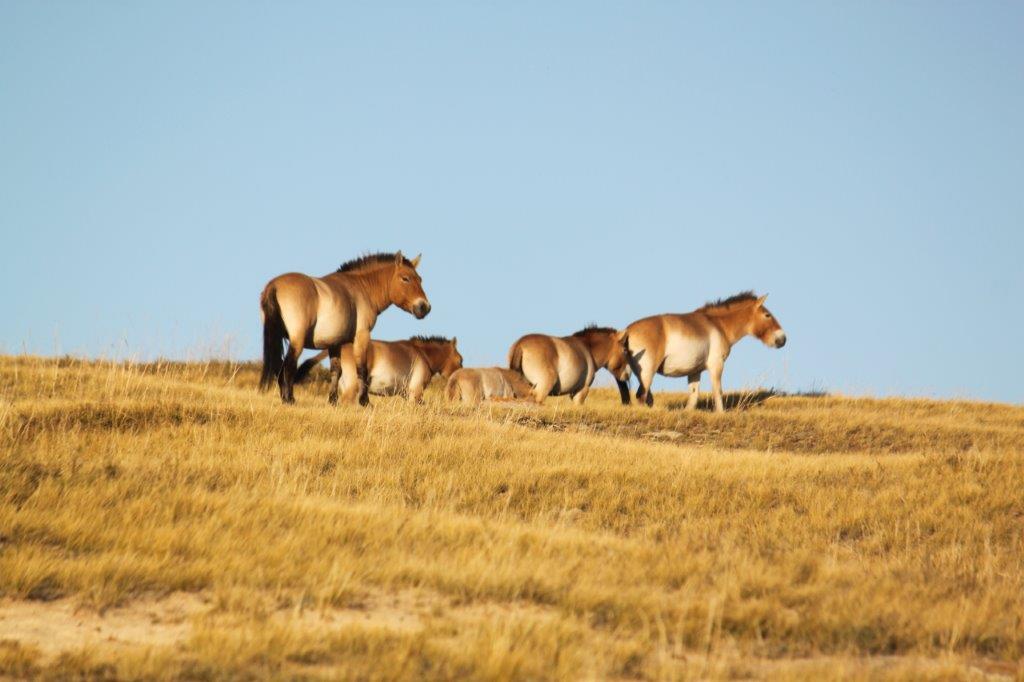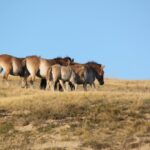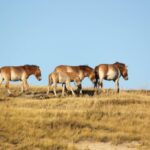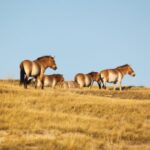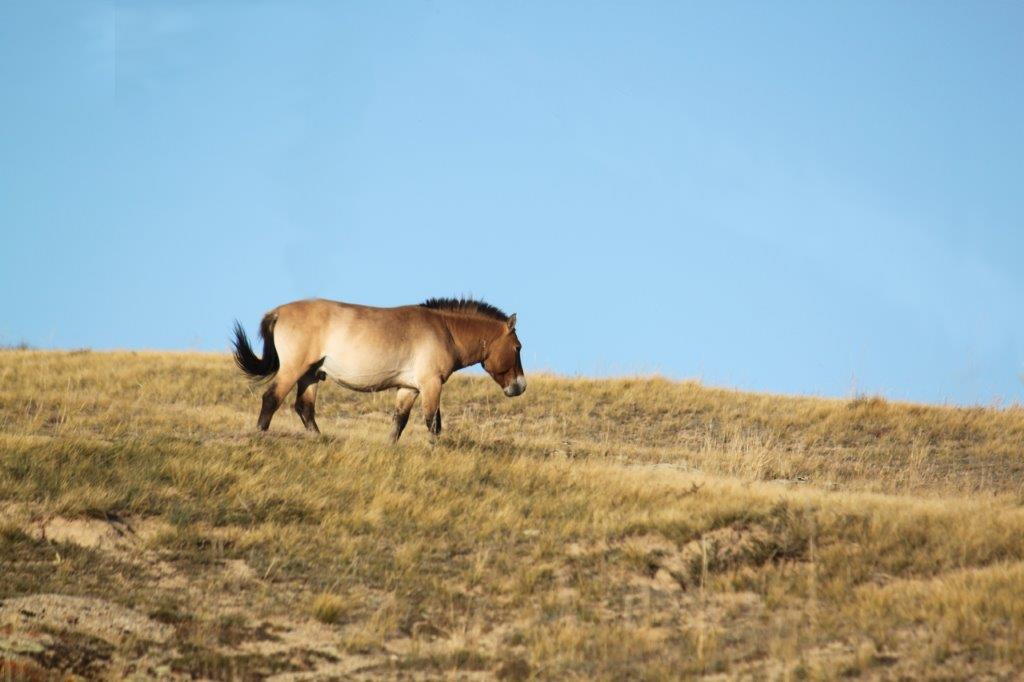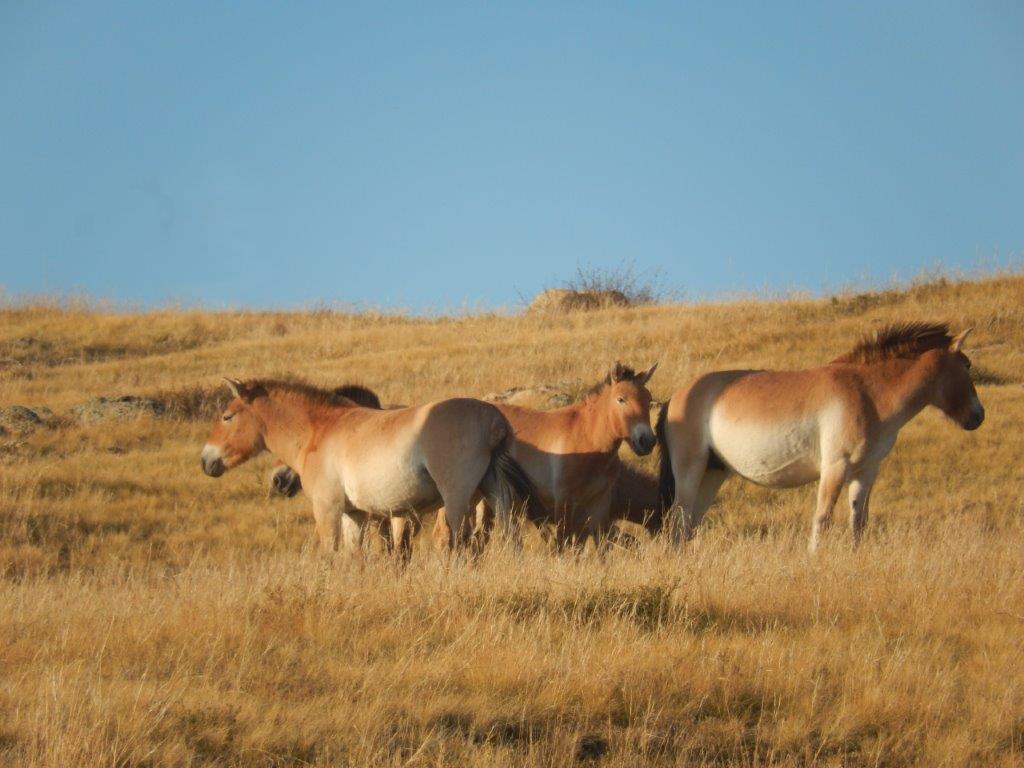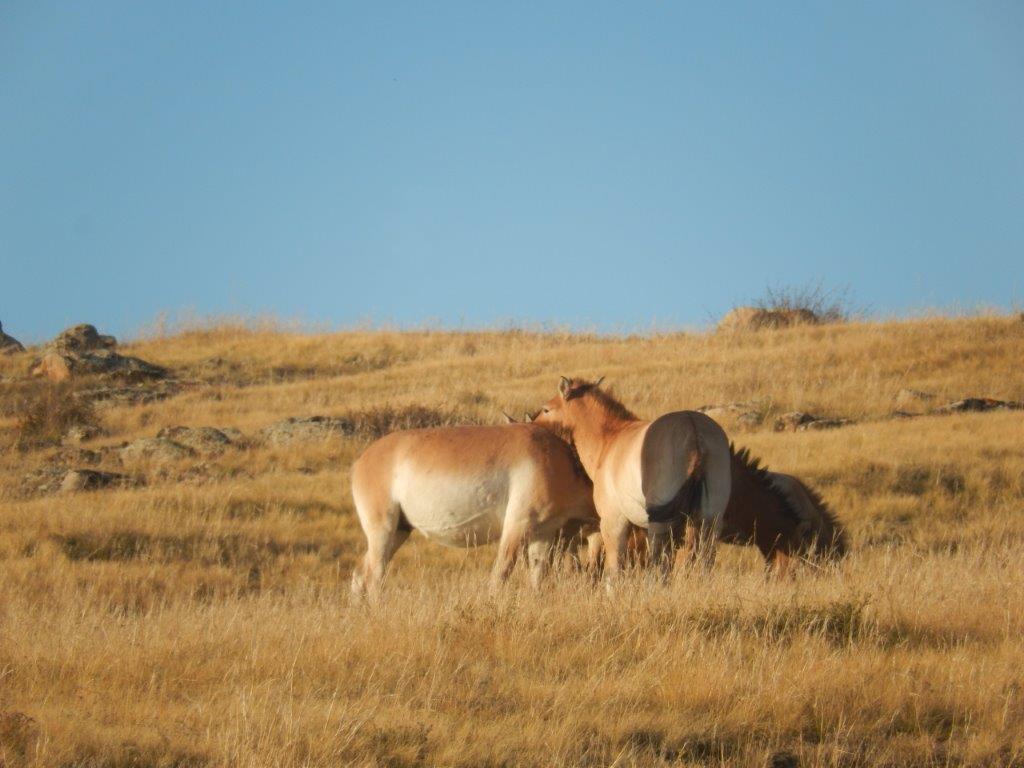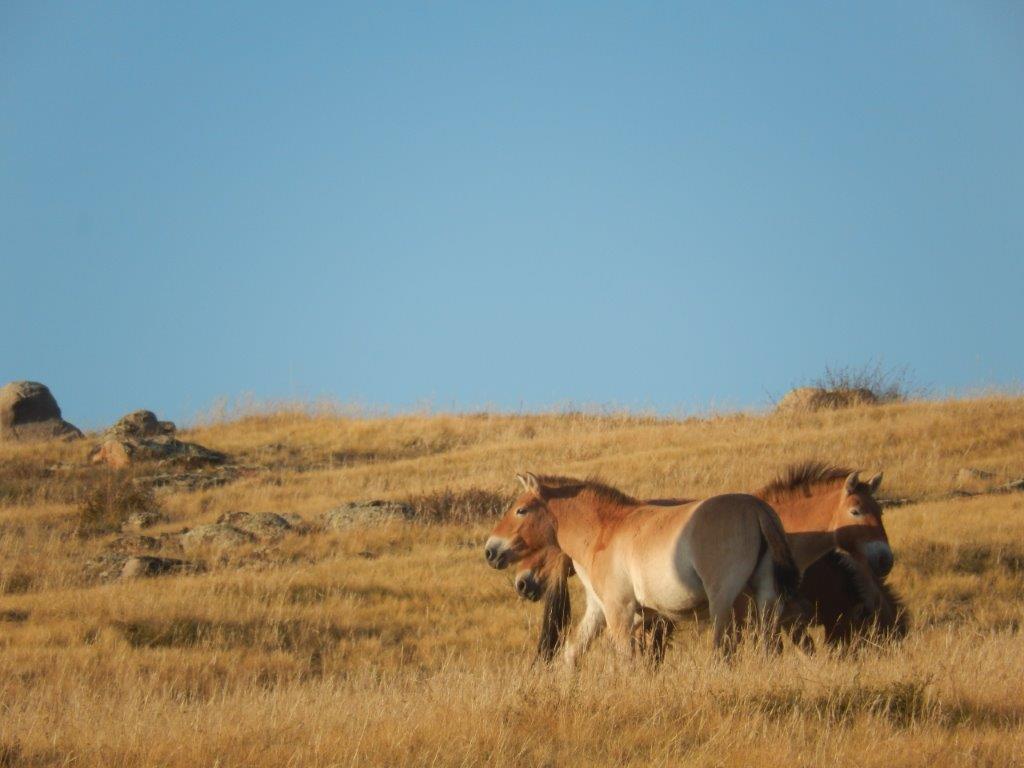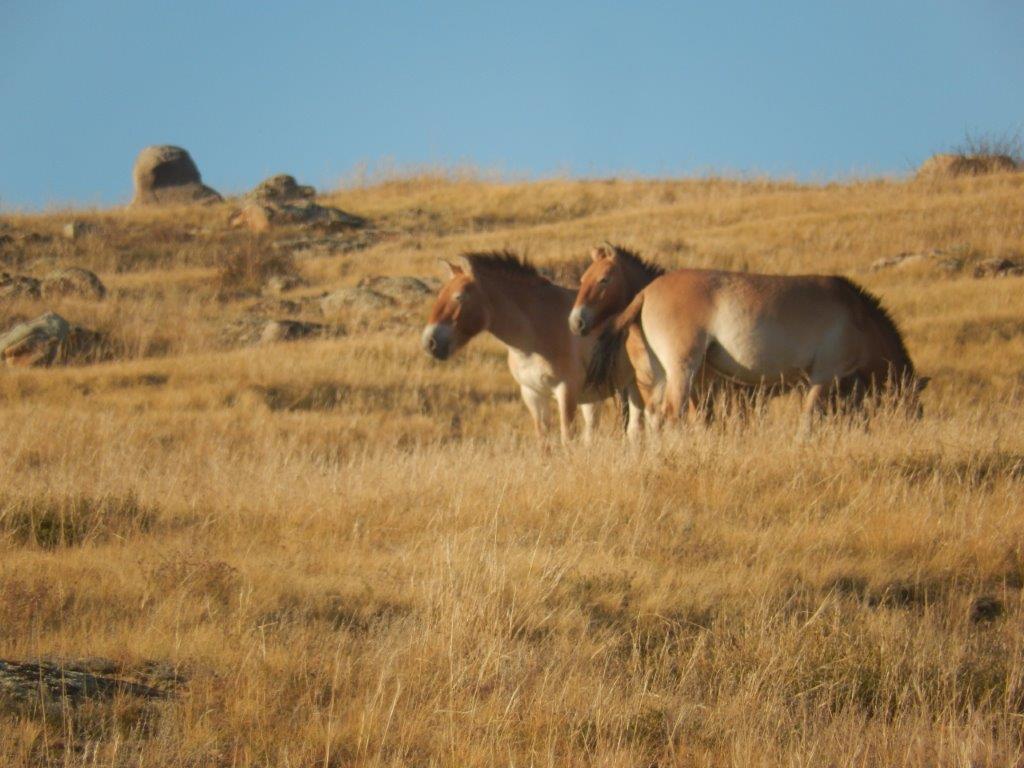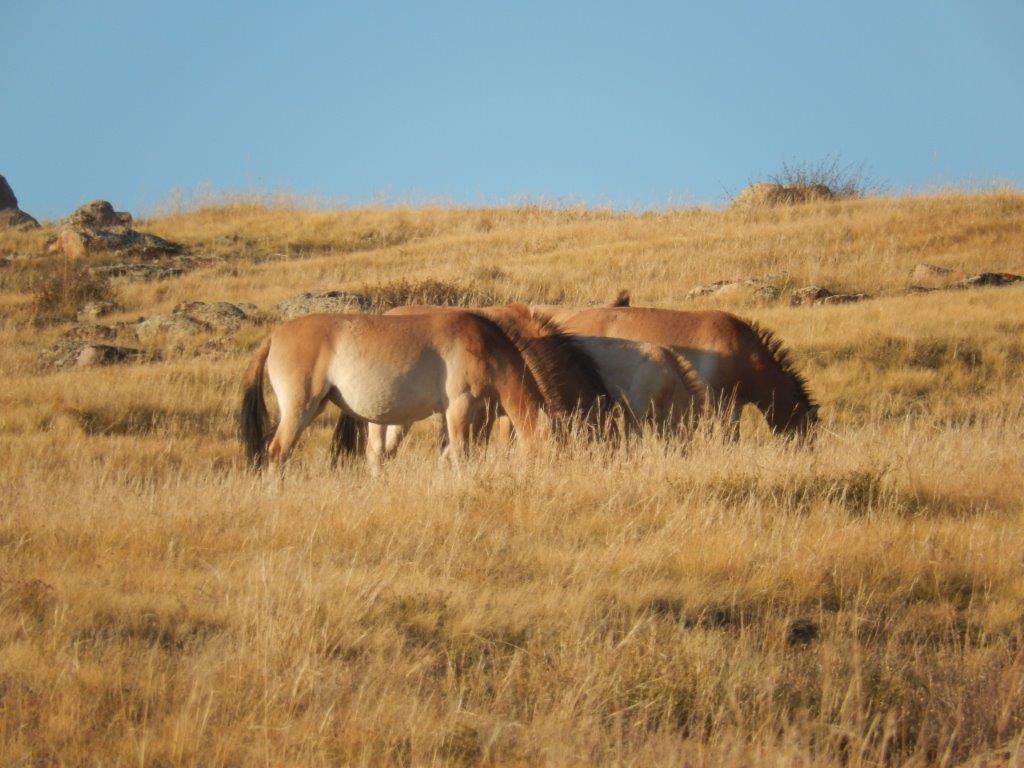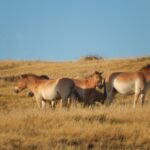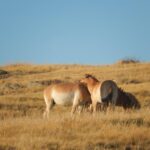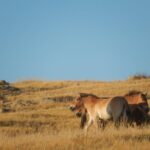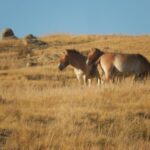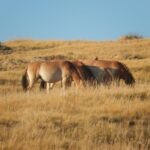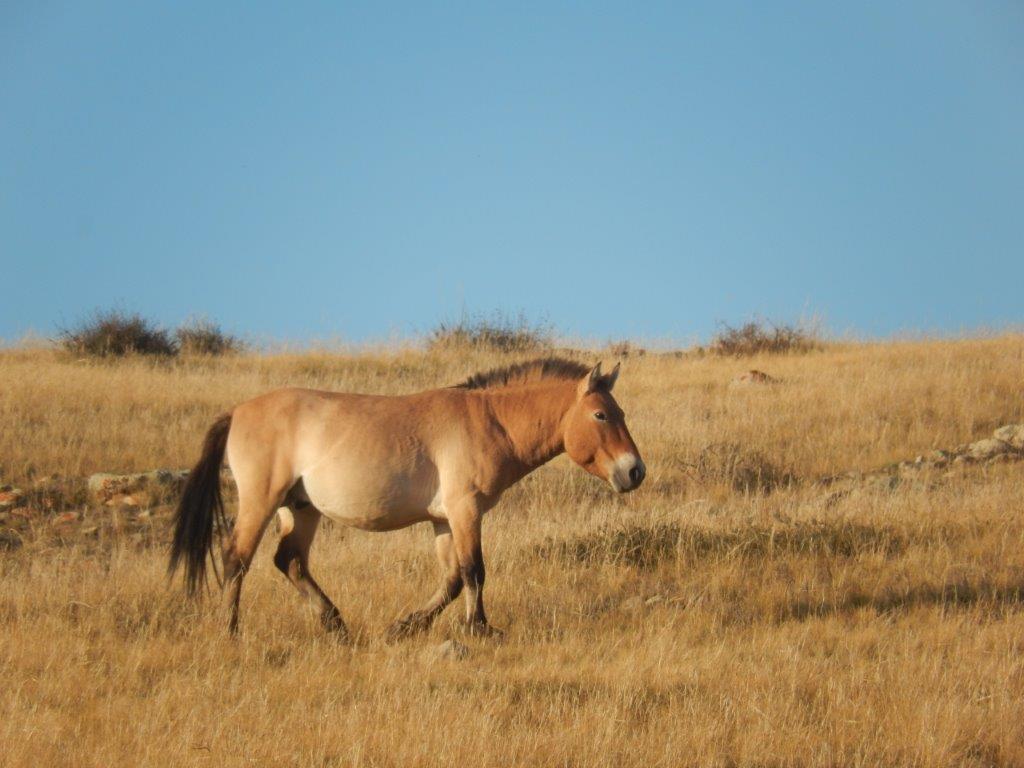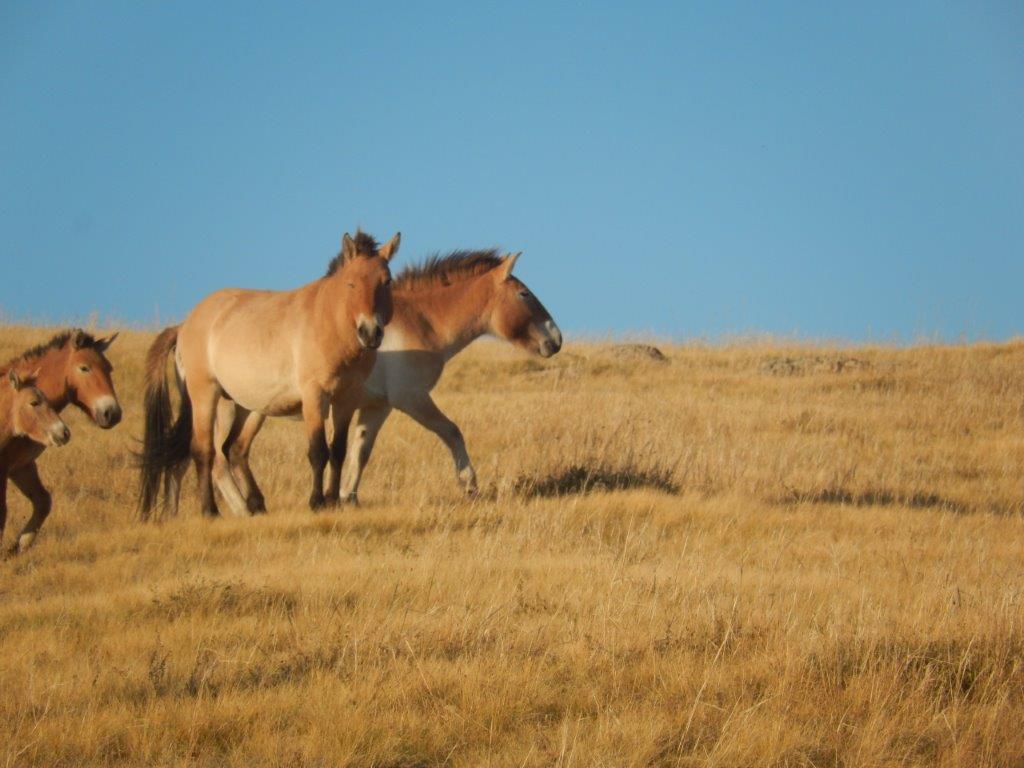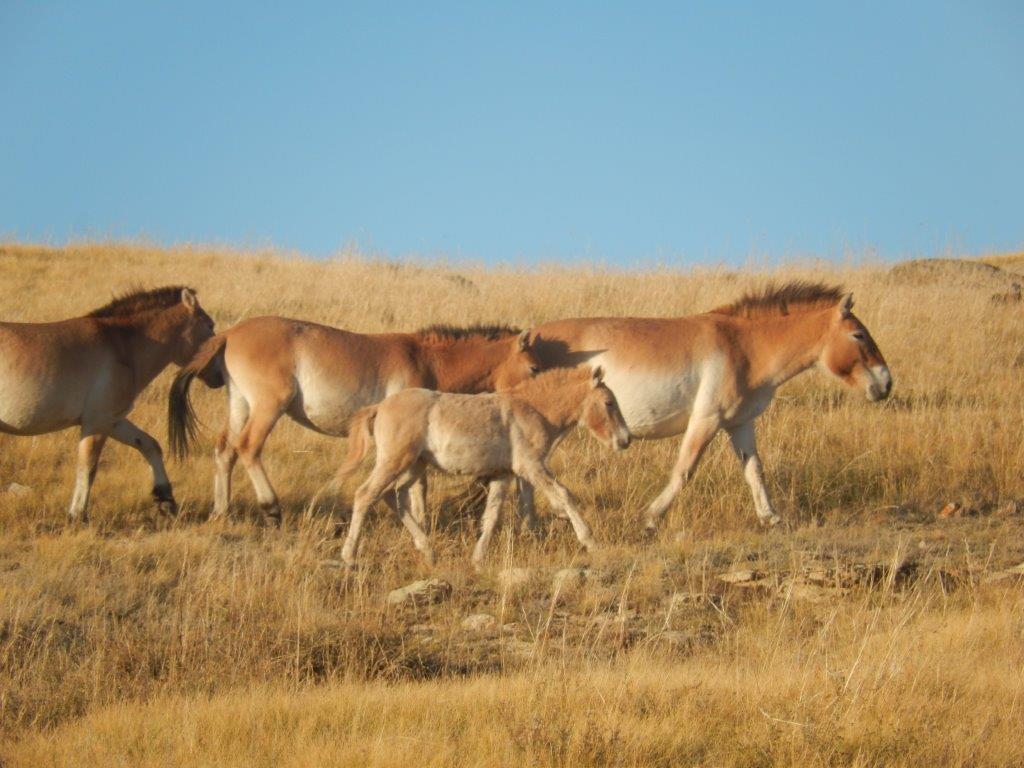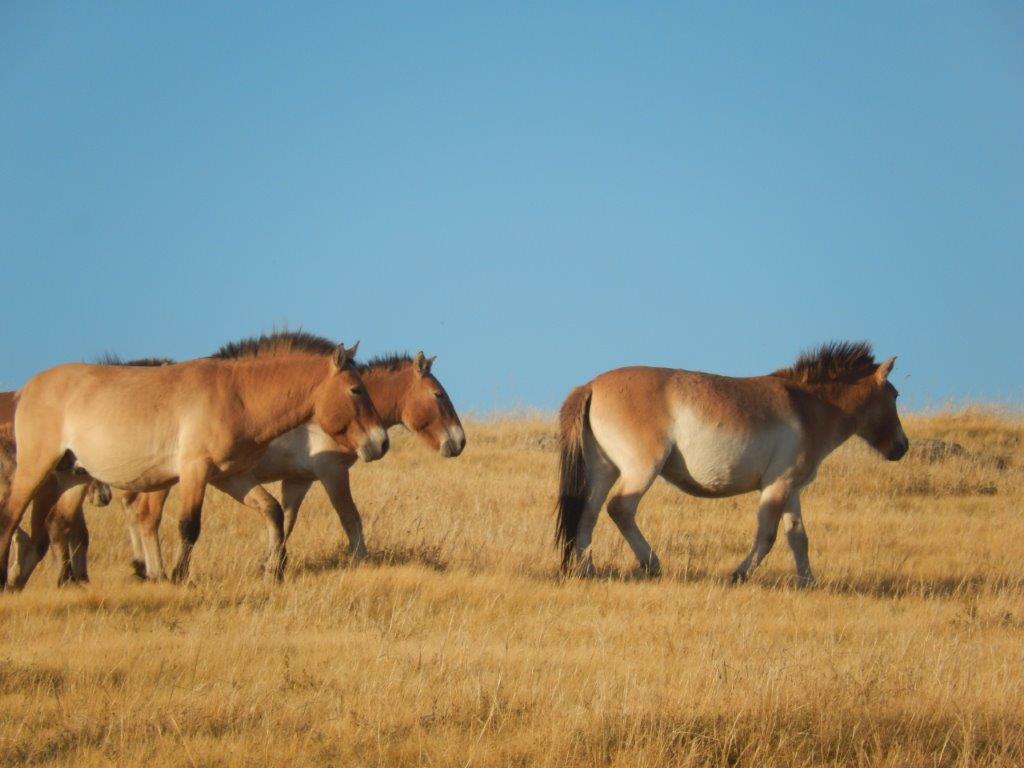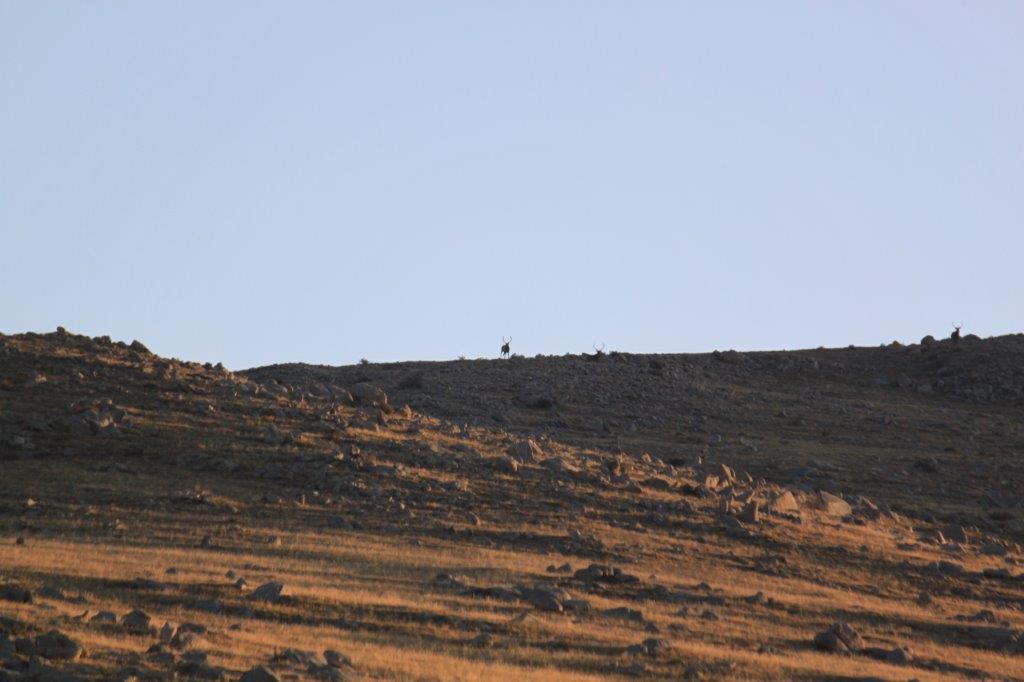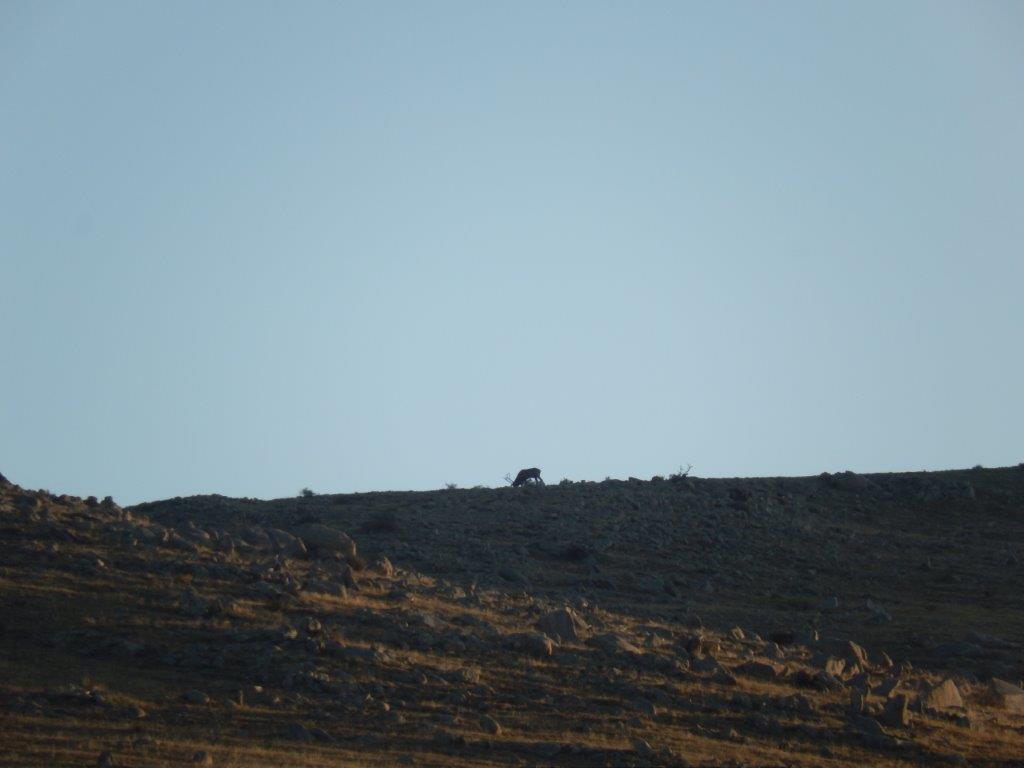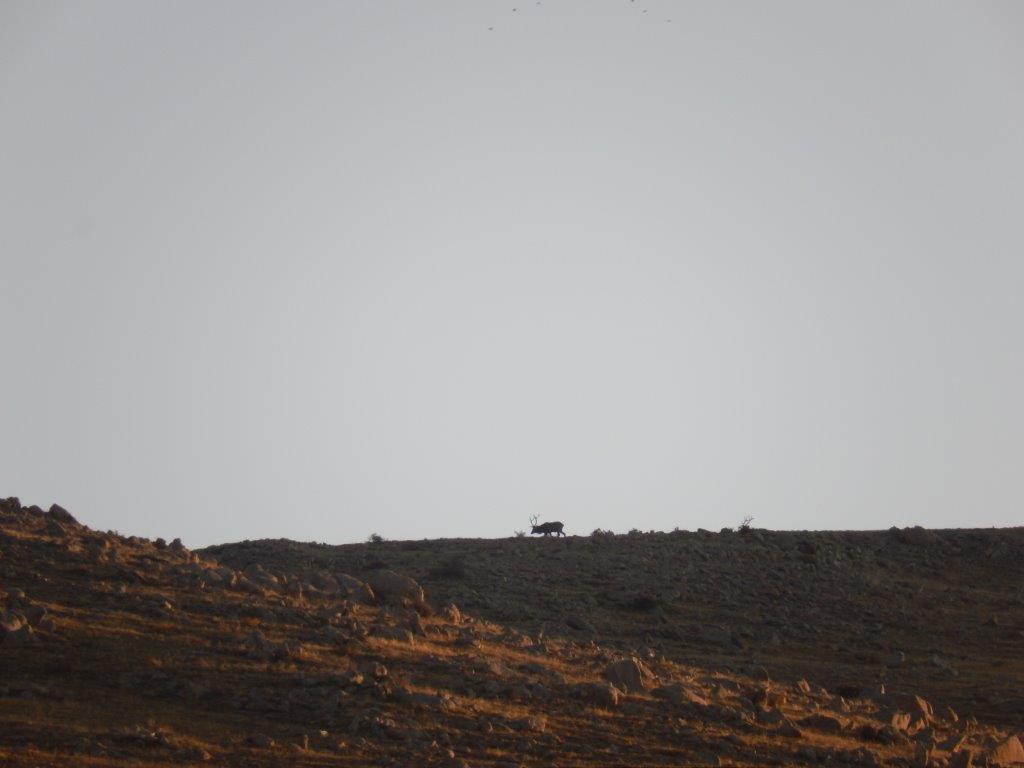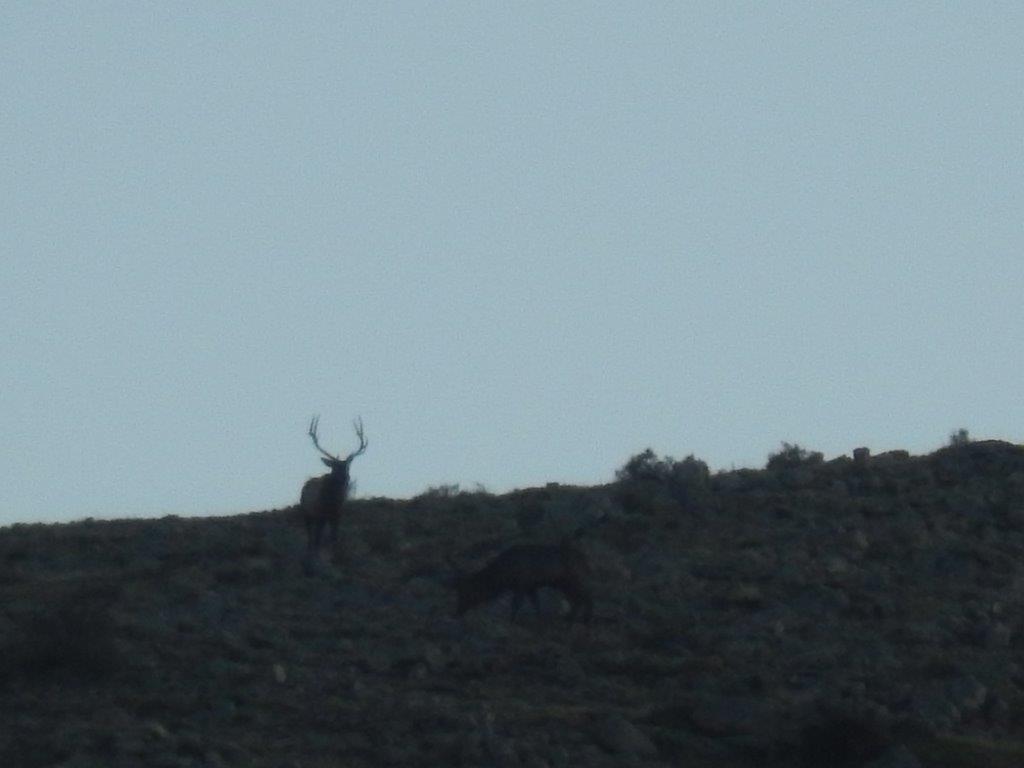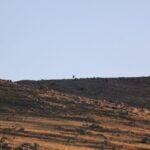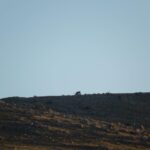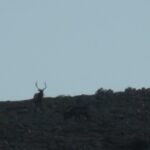Return of the lost Wild horses (Khustain Nuruu National Park)
The next part of the journey was quite spectacular if like me you love horses ???. The Wandelgek arrived early in the afternoon at the…
Khustain Nuruu National Park ?
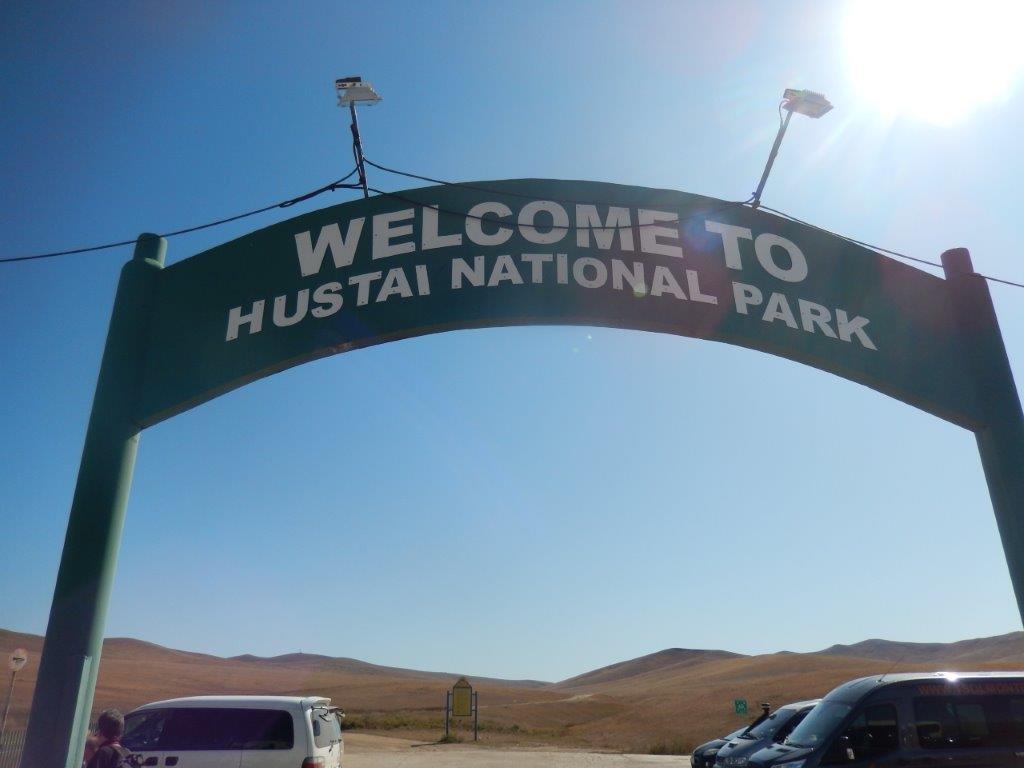 Khustain Nuruu National Park (Mongolian: Хустайн нуруу, Birch Mountains), located in Töv Province (Aimag), is a national park of Mongolia. It is also known as Hustai National Park. The Tuul River runs through the park.
Khustain Nuruu National Park (Mongolian: Хустайн нуруу, Birch Mountains), located in Töv Province (Aimag), is a national park of Mongolia. It is also known as Hustai National Park. The Tuul River runs through the park.
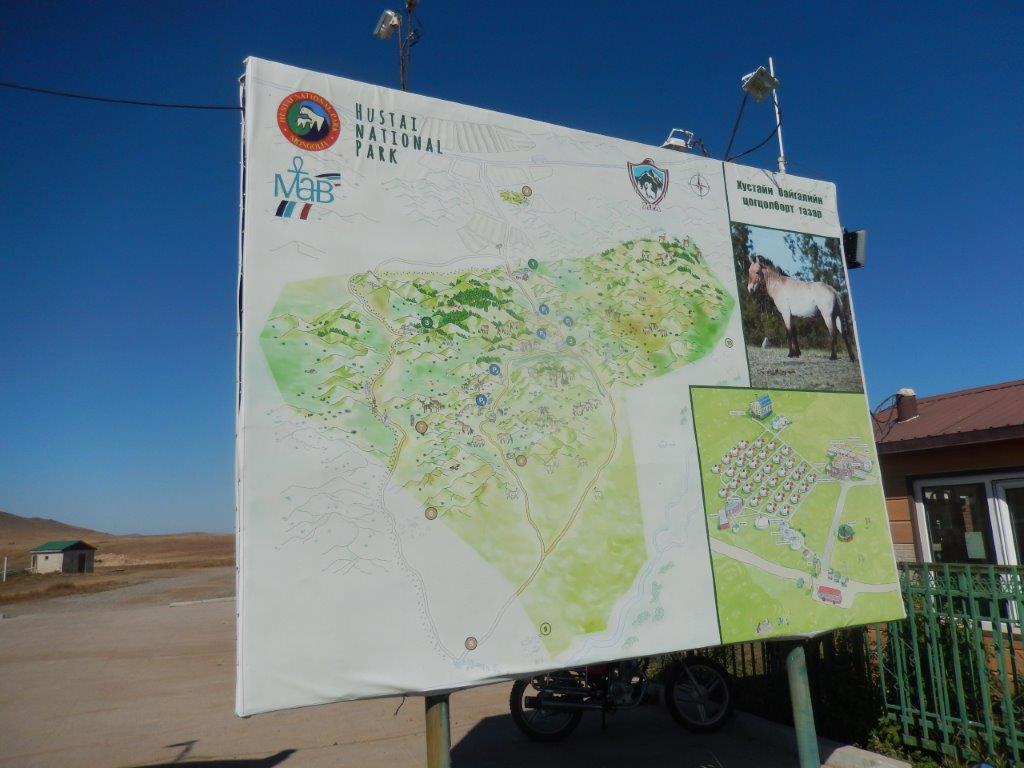 Near its entrance is a ger campsite including a restaurant. It became almost immediately noticeable that we had now arrived within a one day range from Ulaanbaatar. That meant that not only people that were trekking through Mongolia, but also those that were travelling on the Trans Mongolian and had time for a short trip with a one night stay, could reach this quite famous National Park. In all restaurants of ger campsites where The Wandelgek had been before, he and his travel companions had been the only guests, but here the restaurant was crowded and instead of ordering a dinner, which was then served, there was a buffet and there was a long line of people passing that buffet. The food was really good though and there was a lot of different dishes to choose from!
Near its entrance is a ger campsite including a restaurant. It became almost immediately noticeable that we had now arrived within a one day range from Ulaanbaatar. That meant that not only people that were trekking through Mongolia, but also those that were travelling on the Trans Mongolian and had time for a short trip with a one night stay, could reach this quite famous National Park. In all restaurants of ger campsites where The Wandelgek had been before, he and his travel companions had been the only guests, but here the restaurant was crowded and instead of ordering a dinner, which was then served, there was a buffet and there was a long line of people passing that buffet. The food was really good though and there was a lot of different dishes to choose from!
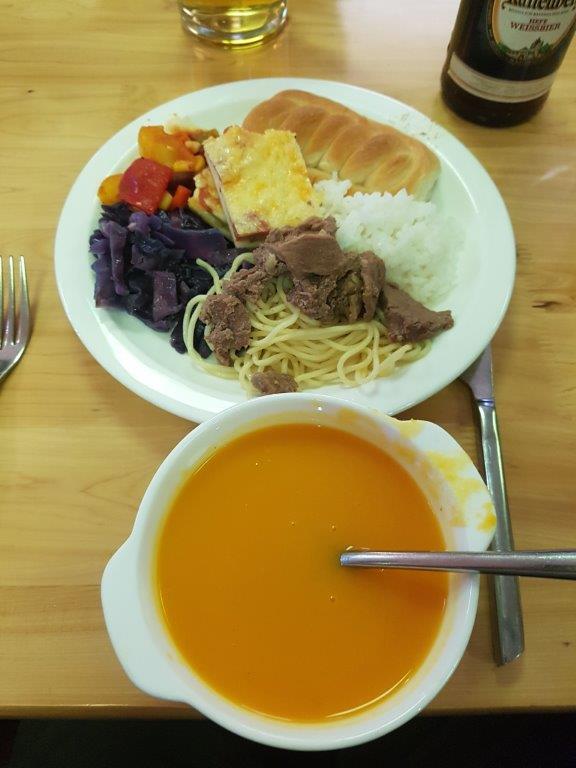 And there was a nice choice of beer… 🙂
And there was a nice choice of beer… 🙂
After a really good dinner, there was some time left to relax. We had planned a game drive in the evening because that is the best moment to spot wildlife. But now there was time for installing my stuff in the ger, a stroll over the campsite and for updating some travel diaries…
While strolling over the ger campsite, The Wandelgek stumbled upon this metal canon ball like object. The fact that there was plaque with text to accompany it made him curious. Now imagine being a nomad sitting on a horse, minding the well being of his herd of cows, sheep and horses. Suddenly a cannon ball rushes from the sky and falls right in front of you in the grass makingva deep impression. I can’t think what someone like that must have thought when this fuel tank of a US spacerocket landed before his horse’s feet.
This was of course a great opportunity to touch something that had been in space ??
There was also a small museum on the premises of the ger campsite. The museum explained a bit about the history of the park…
History
The Mongolian Government declared Hustai National Park as a Specially Protected Area in 1993, one year after the initiation of the reintroduction project of the Takhi (Przewalski’s horse) to the Hustain Nuruu. The HNP extends through the Khentii Mountains and includes the western edge of the Mongolian steppe at the boundaries of Altanbulag, Argalant and Bayankhangai Soums of Töv Province. The park is about 100 km from the capital city of Ulaanbaatar to the west.
The HNP covers 50,600 ha land which is home to 459 species of vascular plants, 85 species of lichens, 90 species of moss and 33 species of mushrooms. 44 species of mammals have been recorded, including Altai wapiti, Mongolian gazelle, roe deer, wild boar, wild sheep, ibex, Mongolian marmots, grey wolf, Eurasian lynx, Pallas’s cat, red fox, corsac fox and Eurasian badger. The 217 species of birds include golden eagle, lammergeier, great bustard, whooper swan, black stork, Daurian partridge and little owl. There are 16 species of fish, 2 species of amphibians, and 385 species of insects (including 21 species of ants, 55 species of butterflies, 10 species of bush crickets and 29 species of grasshoppers). A new species of soil insect has been found in the Hustai and given the scientific name of Epidamaeus khustaiensis.
In 2002, the Man and the Biosphere Reserves organization of UNESCO certified the HNP as a member of the world biosphere network of natural reserves. The HNPT was enrolled as a member of IUCN in 2007.
But it mainly focussed on the reason why this national park was famous and visited so much. That reason was the reintroductiin of Mongolia’s wild horse, The Takhi, or better known as the Przewalski horse. This horse was indigenous to Mongolia but got extinct. However, before the horse dissappeared from Mongolia, several countries including The Netherlands had collected small numbers of horses for zoos. There a breeding programm was quite succesfull. Then they introduced these horses in small nature parks. In the Netherlands there were lots of troubles with rivers having not enough space and overflowing on a regular base. That’s why the government decided to make these rivers wild again, meaning that river parks were created, where nature could freely do its thing. To make sure that there were not too much trees and bushes in tgese parks, animals like Scottish Higlanders and Prezwalski horses were introduced for grazing. Then some countries helped Mongolia to reintroduce a selection of these horses and they multiplied very succesfully now that they were protected by a National Park. Even Willem Alexander (then crown prince, nowadays king of The Netherlands) visited the park to get educated/informed about the reintroduction project of the takhi. There were lots of pictures of the horses and of the visit too.
Late in the afternoon The Wandelgek entered the bus to join the gamedrive.
Maral (Caspian Red Deer)
The first animal he spotted were some large deer, at first running though the yellow grass of the valley and later as silhouettes on a hilltop. It was Maral, an asiatic red deer related to European red deer (Dutch: Edelhert), another animal that can also be found in The Netherlands.
The red deer (Cervus elaphus) is one of the largest deer species. A male red deer is called a stag or hart, and a female is called a hind. The red deer inhabits most of Europe, the Caucasus Mountains region, Asia Minor, Iran, parts of western Asia, and central Asia. It also inhabits the Atlas Mountains region between Morocco and Tunisia in northwestern Africa, being the only species of deer to inhabit Africa. Red deer have been introduced to other areas, including Australia, New Zealand, the United States, Canada, Peru, Uruguay, Chile, and Argentina. In many parts of the world, the meat (venison) from red deer is used as a food source.
The Caspian red deer (Cervus elaphus maral), is one of the easternmost subspecies of red deer that is native to areas between the Black Sea and Caspian Sea such as Crimea, Asia Minor, the Caucasus Mountains region bordering Europe and Asia, and along the Caspian Sea region in Iran. The Caspian red deer is sometimes referred to as maral, noble deer, or eastern red deer.
Driving on The Wandelgek spotted a rather large herd of horses, but these were no Takhi yet.
The Takhi or Przewalski horse
A bit further near a river, he did spot a group of Takhi and they had a young foal in their midst too?.
The location was awesome. It was a low hill slope going down towards the small Tuul River.
The light was gorgeous and the dry yellow grass underneath the blue sky were a perfect backdrop to photograph the Takhi…
Great to see that Man can not only destroy nature but that he can repair some thing too.
The only dissonant in some of the pictures were other photographers and wooden electricity poles and dark electricity lines, but I skillfully removed those from the pictures as if they were never there.
Long live Photoshop!!!?
Przewalski’s horse (Equus przewalskii or Equus ferus przewalskii) also called the takhi, Mongolian wild horse or Dzungarian horse, is a rare and endangered horse originally native to the steppes of Central Asia. At one time extinct in the wild, it has been reintroduced to its native habitat since the 1990s in Mongolia at the Khustain Nuruu National Park, Takhin Tal Nature Reserve, and Khomiin Tal, as well as several other locales in Central Asia and Eastern Europe.
Its taxonomic position is still debated, with some taxonomists treating Przewalski’s horse as a species, E. przewalskii, others as a subspecies of wild horse (E. ferus przewalskii) or a feral variety of the domesticated horse (E. f. caballus). It is named after the Russian geographer and explorer Nikołaj Przewalski.
The light was simply brilliant and the horses are amazing animals ?…
The foal stayed close to the safety of the herd…
At the end of the day after the sun had set behind the hills, The Wandelgek spotted some more red deer as they had moved to the hill top and now appeared in silhouette…
After the gamedrive the bus returned to the ger campsite and it was already almost dark. It was time for evening dinner and some drinks in the restaurant.
After a great evening it was bedtime. Well not quite. It was my last night in a ger before arrival in the city of Ulaanbaatar. The plan was to arrive there tomorrow late in the afternoon, after some more cool adventures.
The Wandelgek left the restaurant and sat for a while before his ger, watching the bright night sky and the beautiful milky way…

